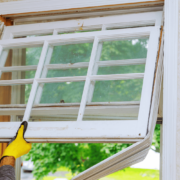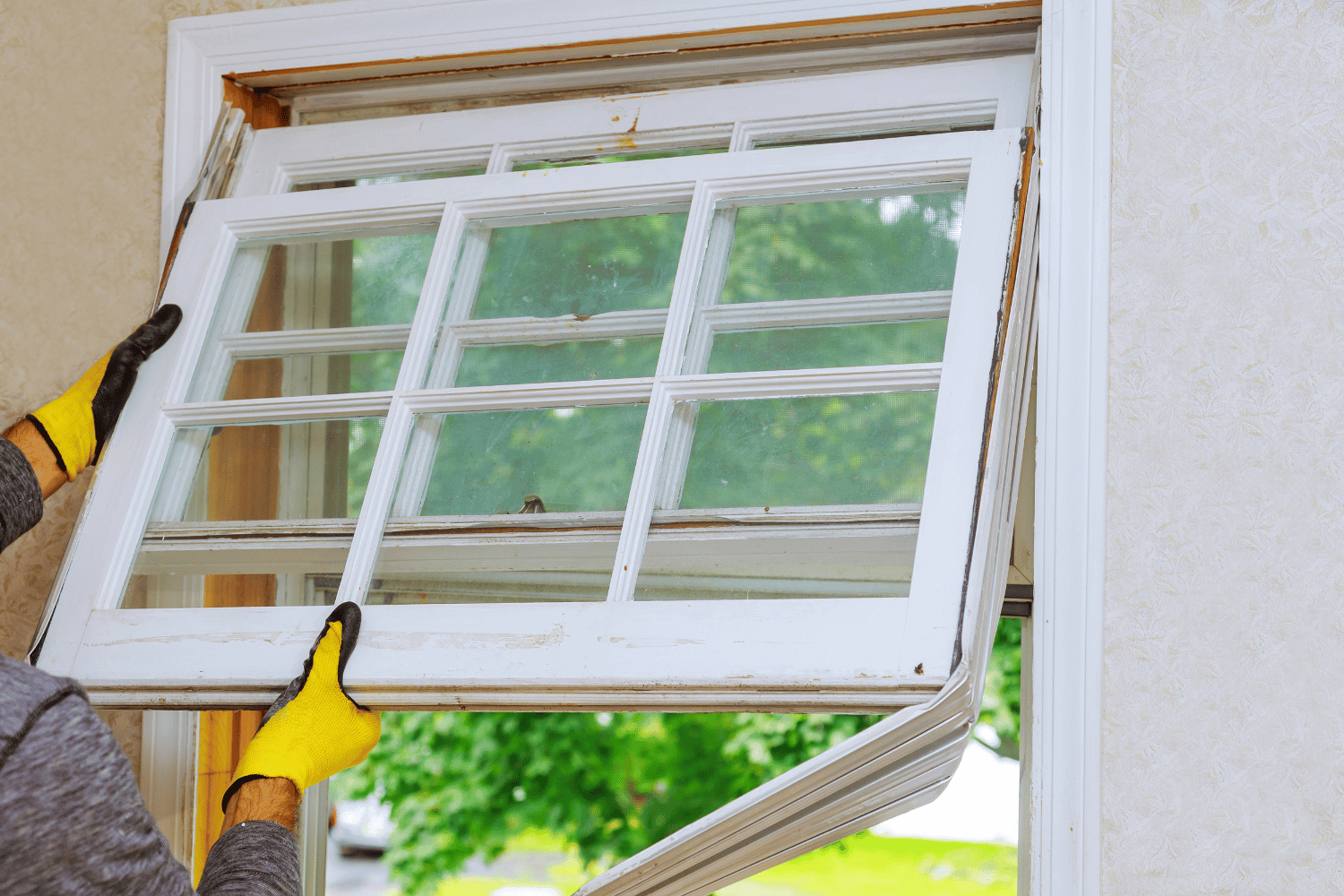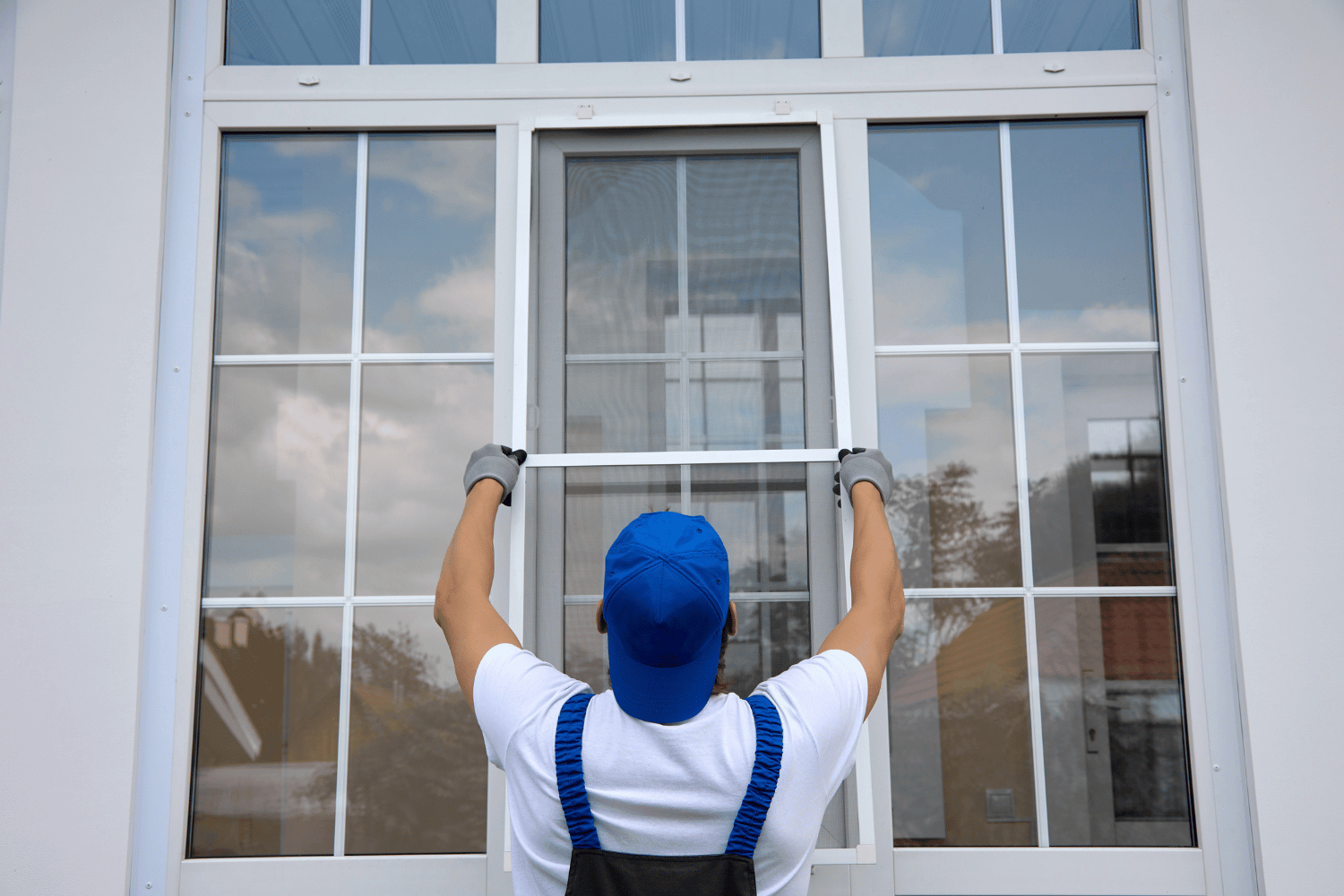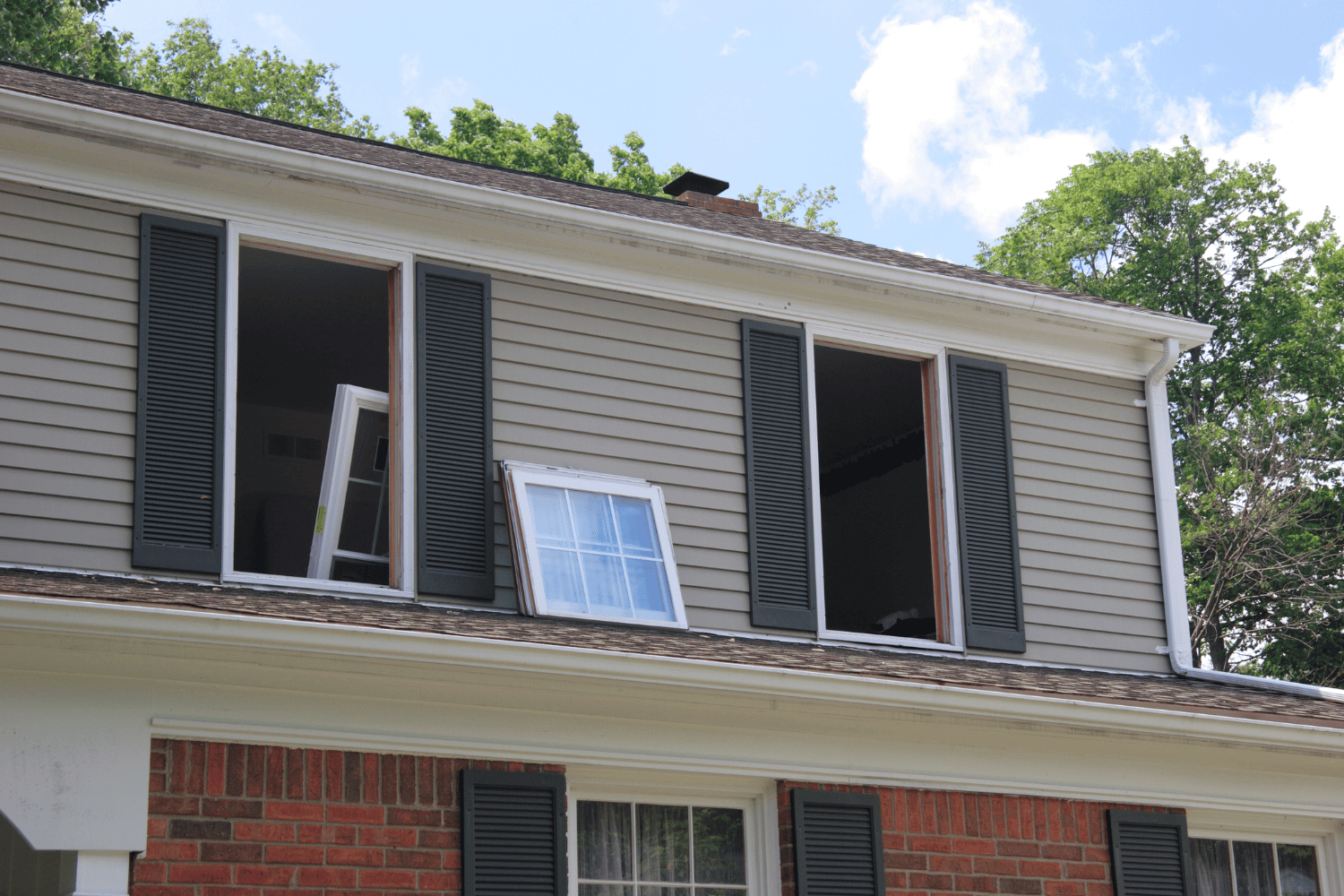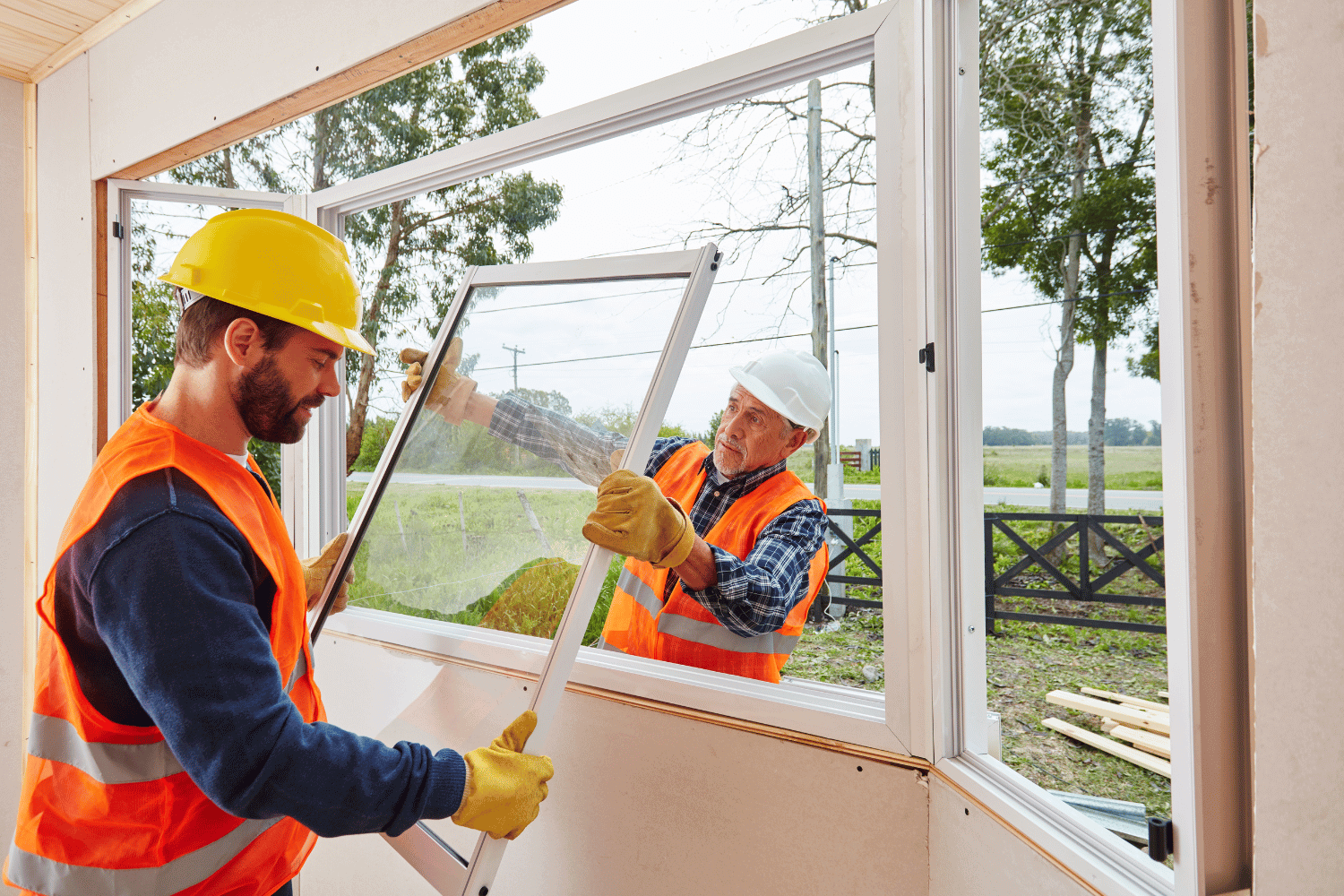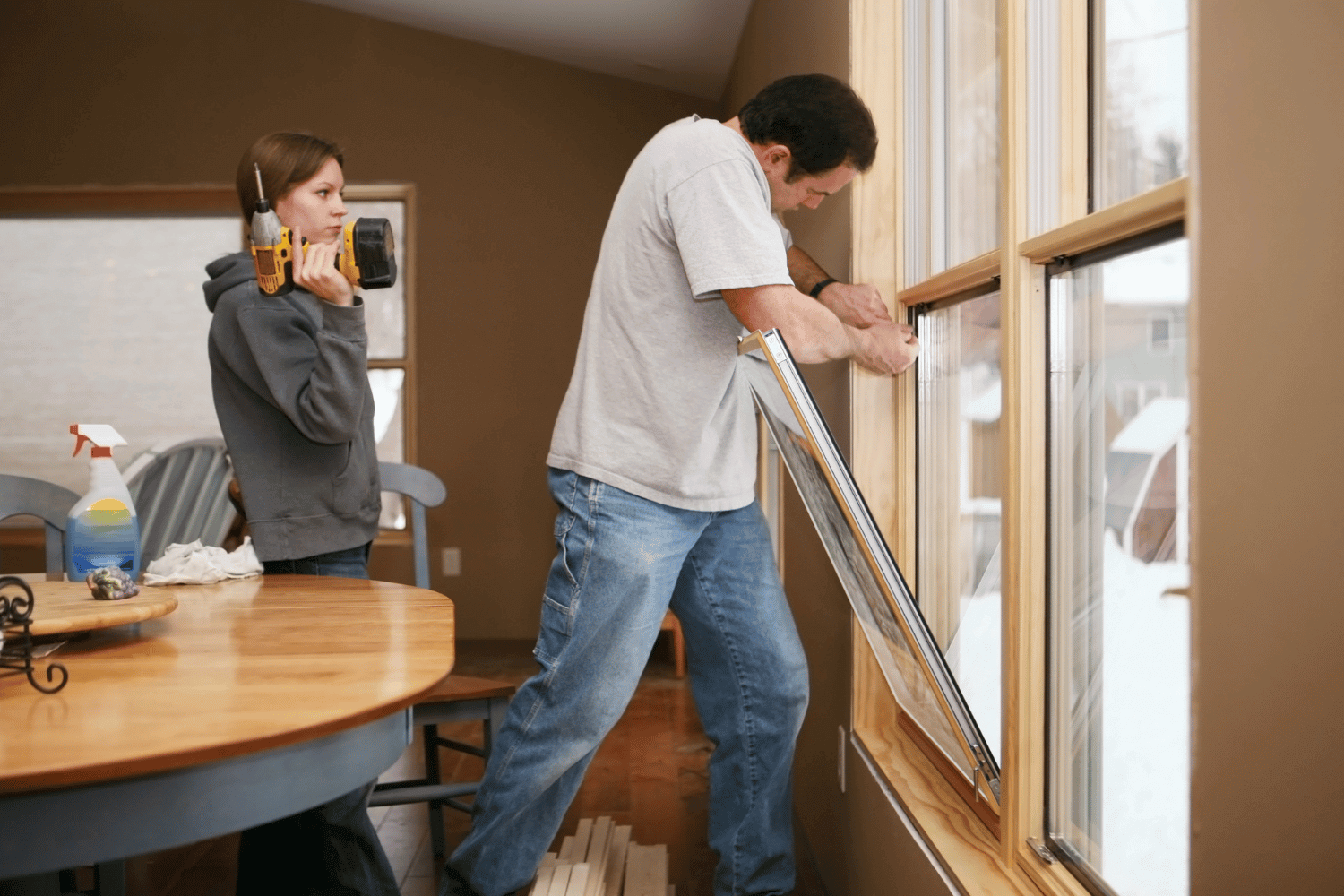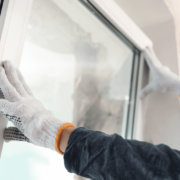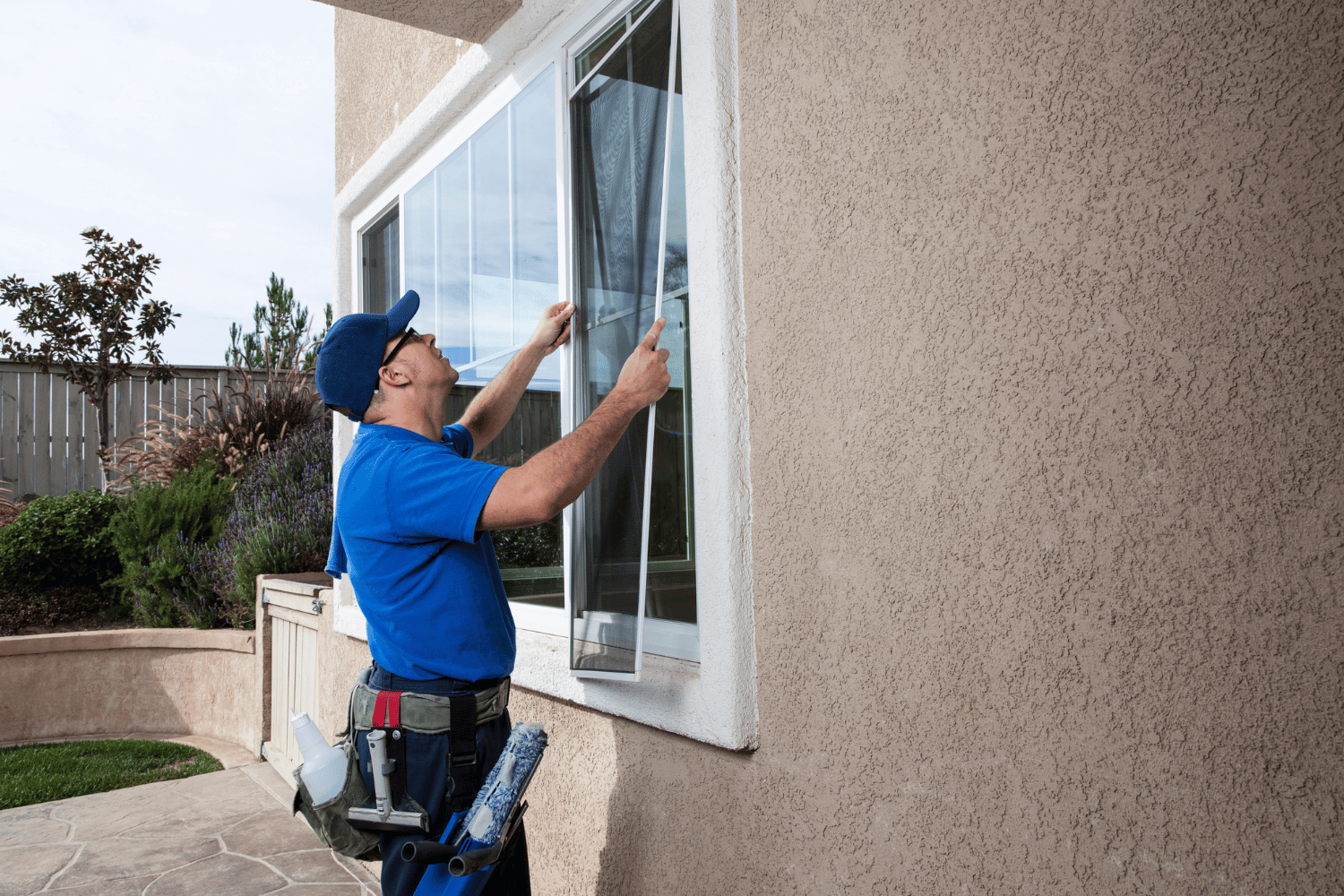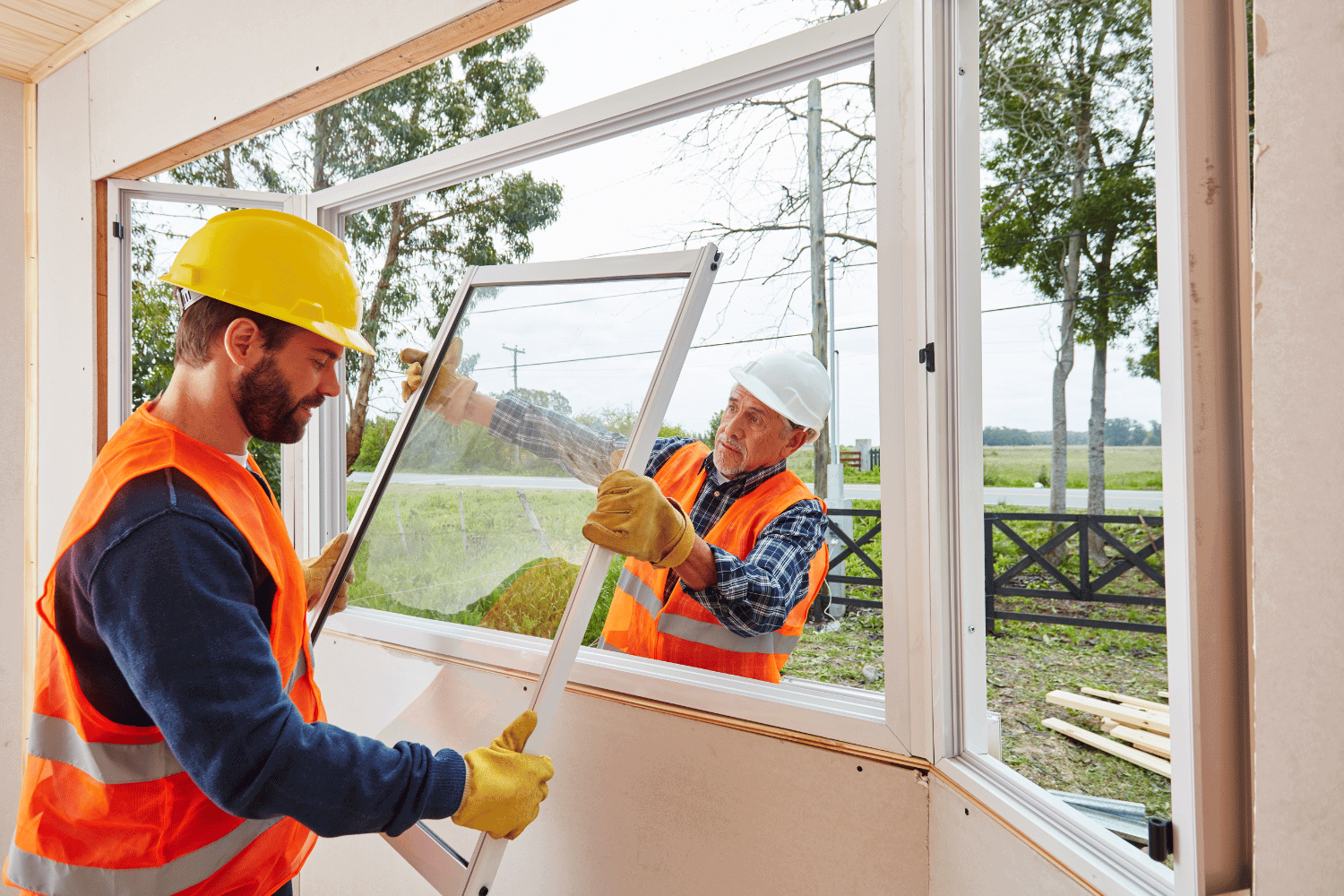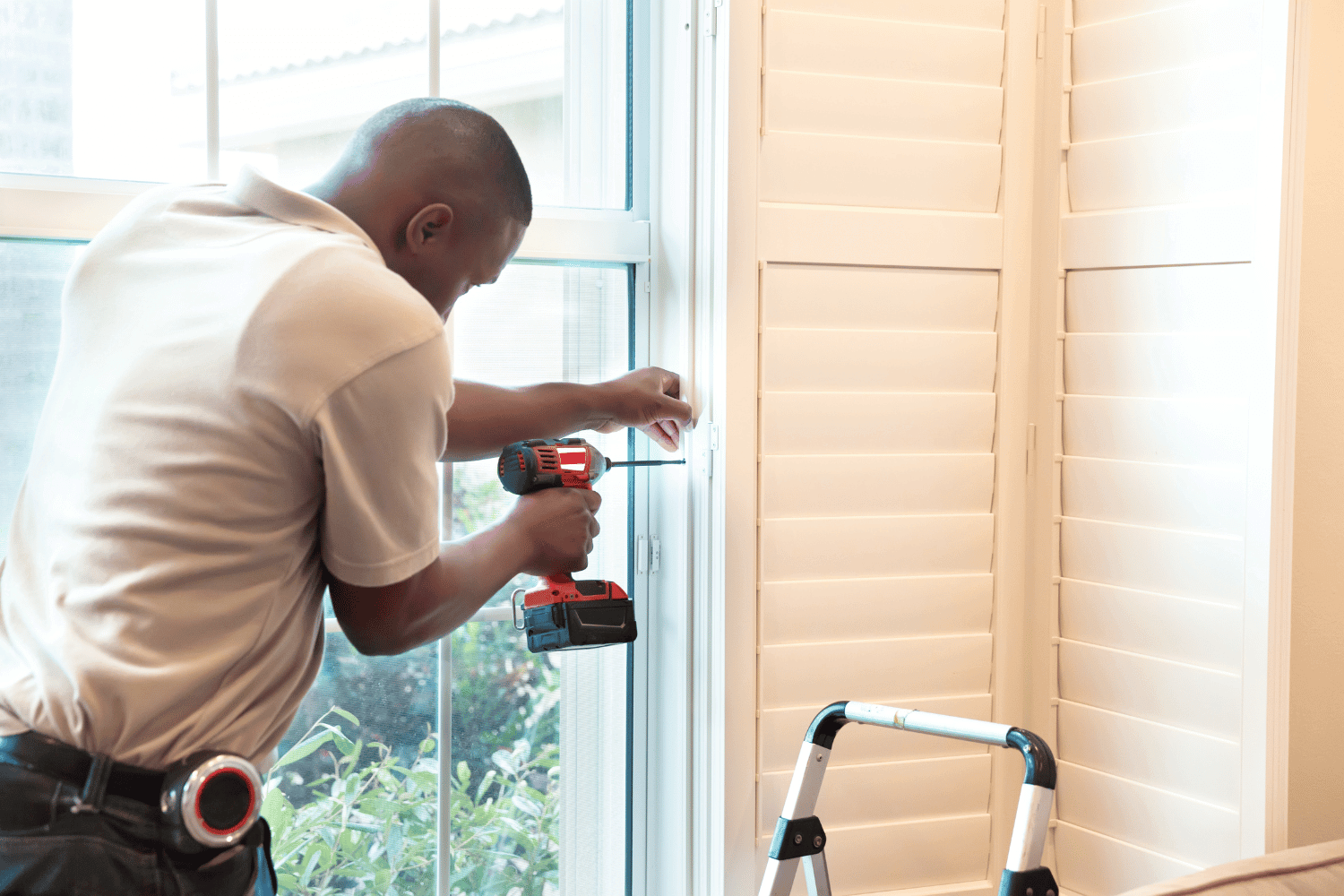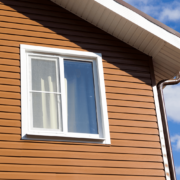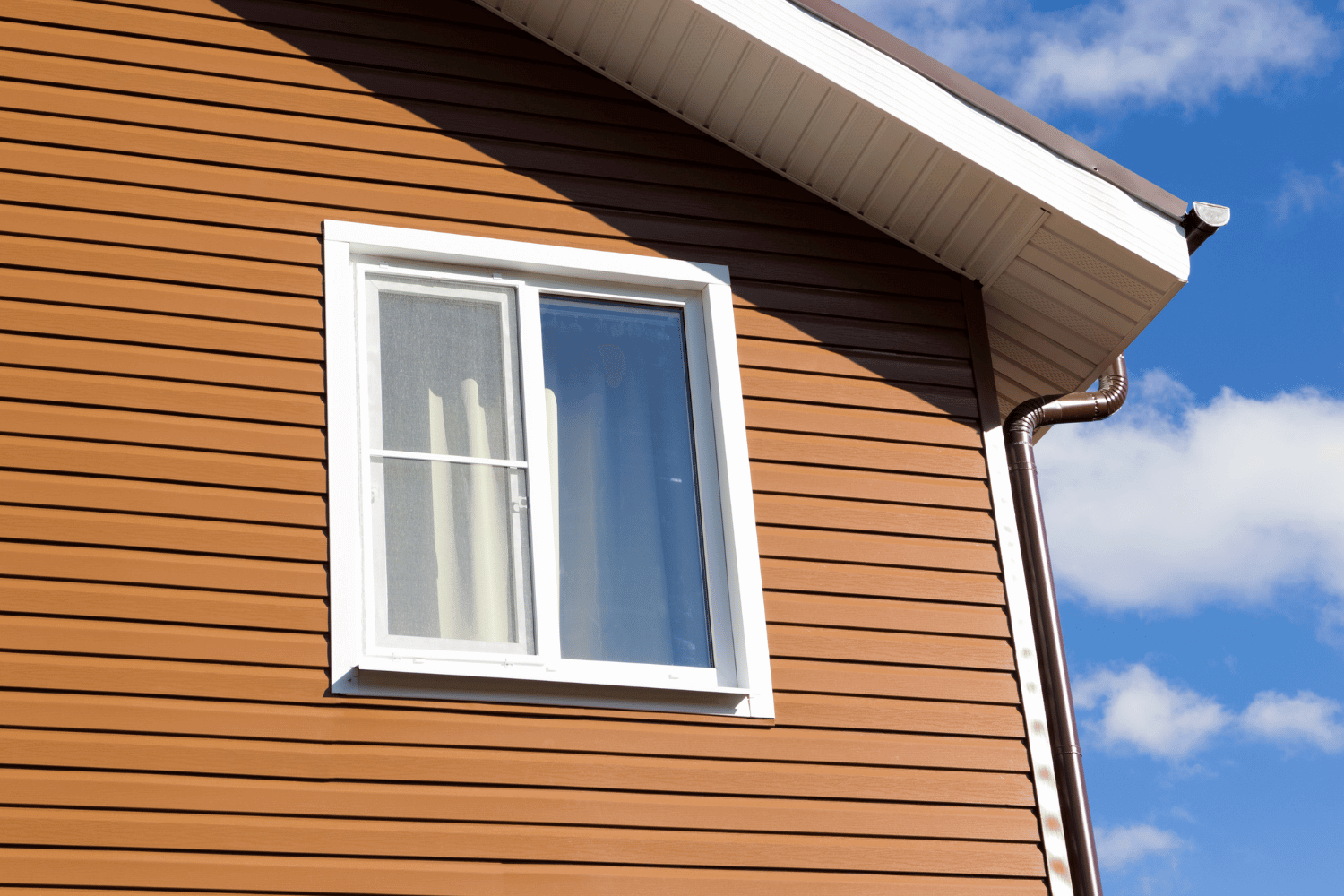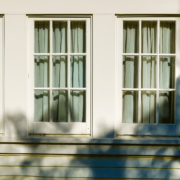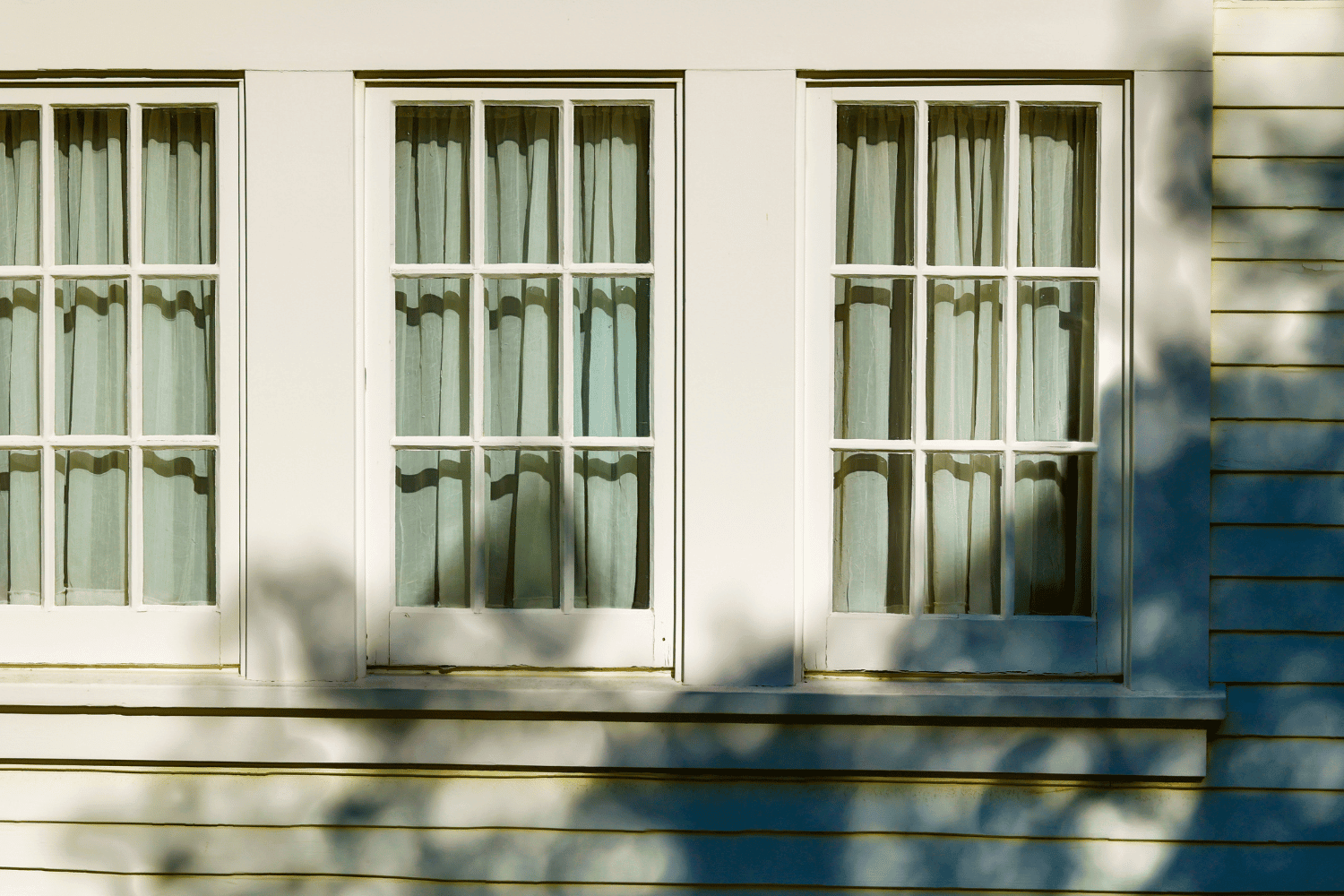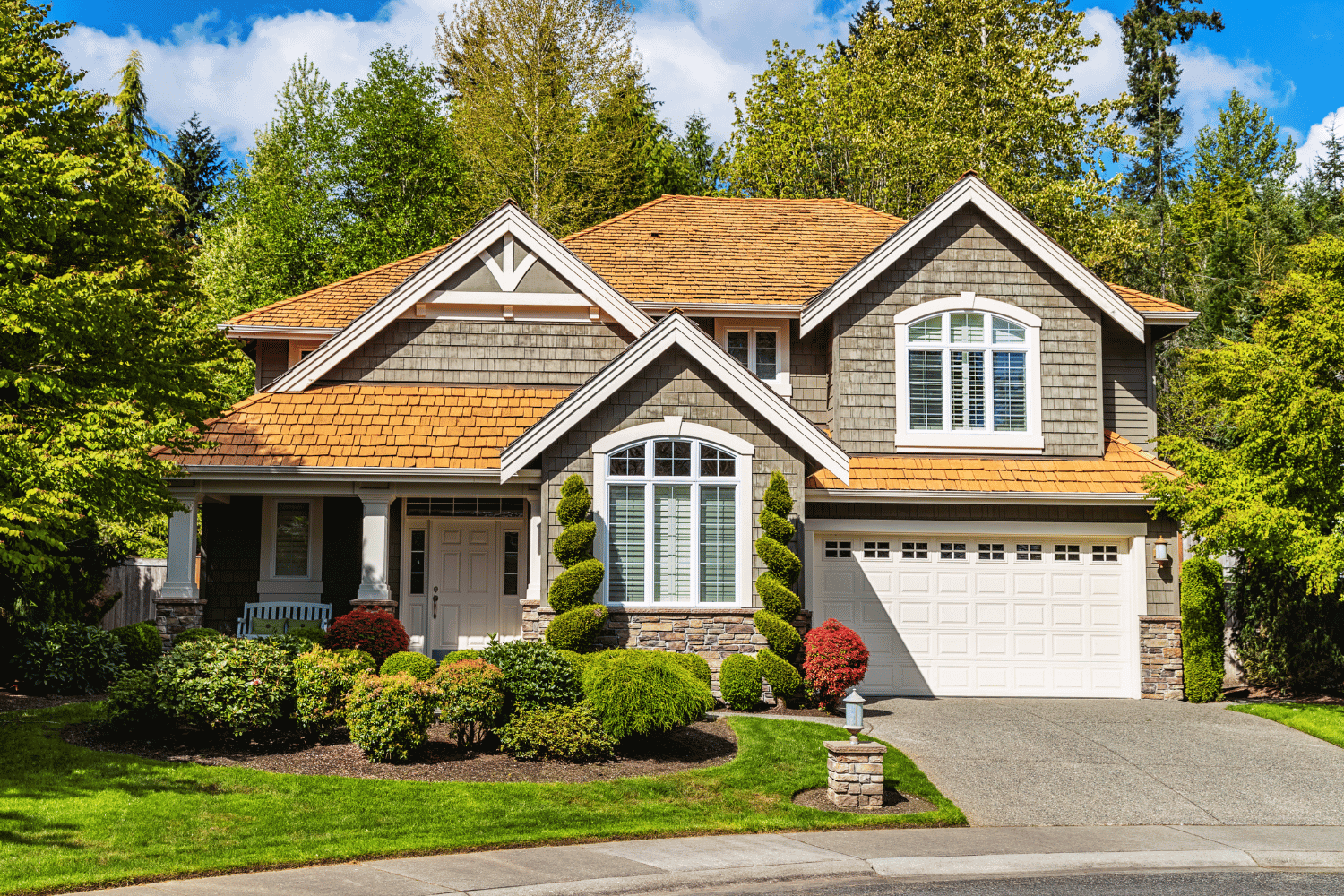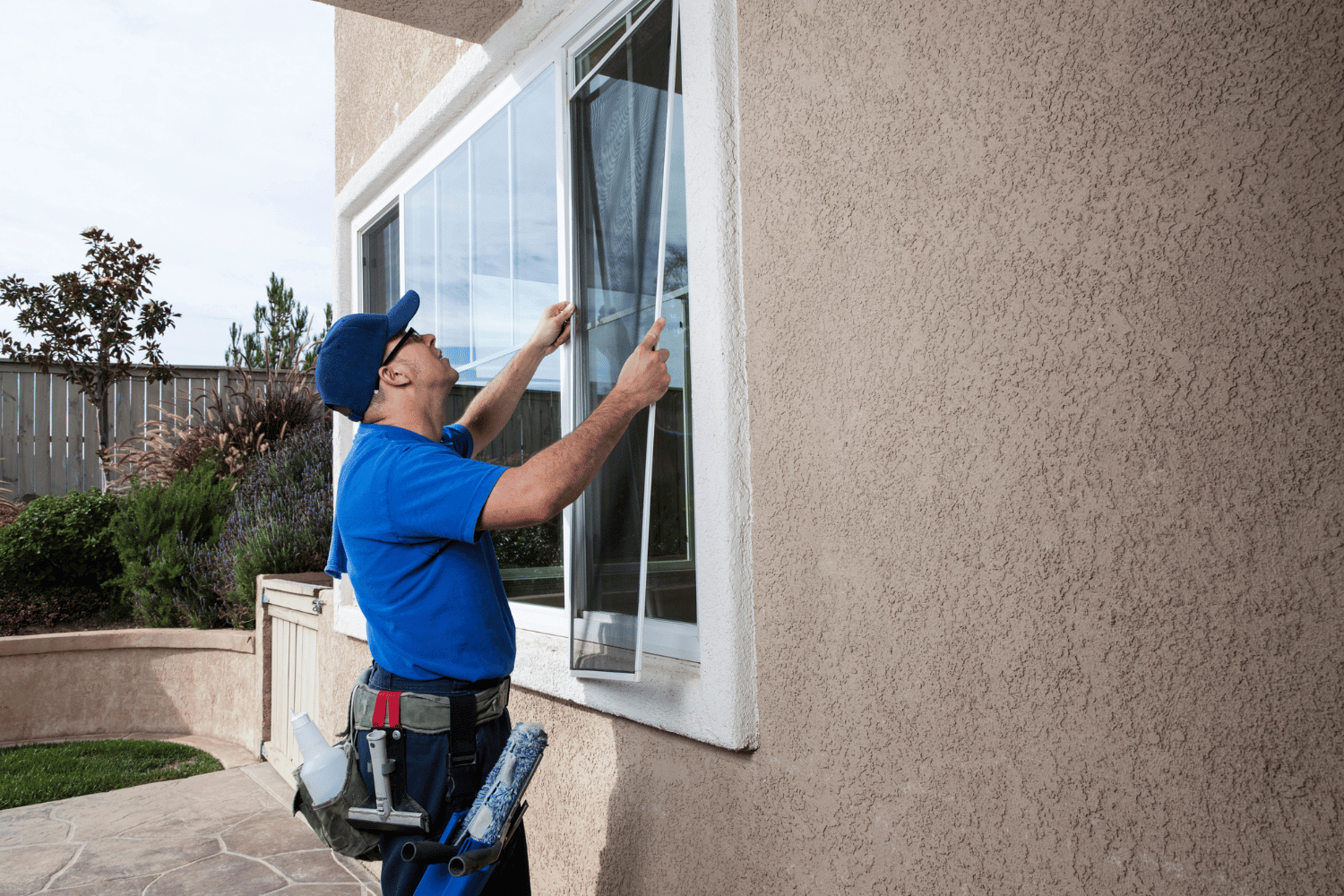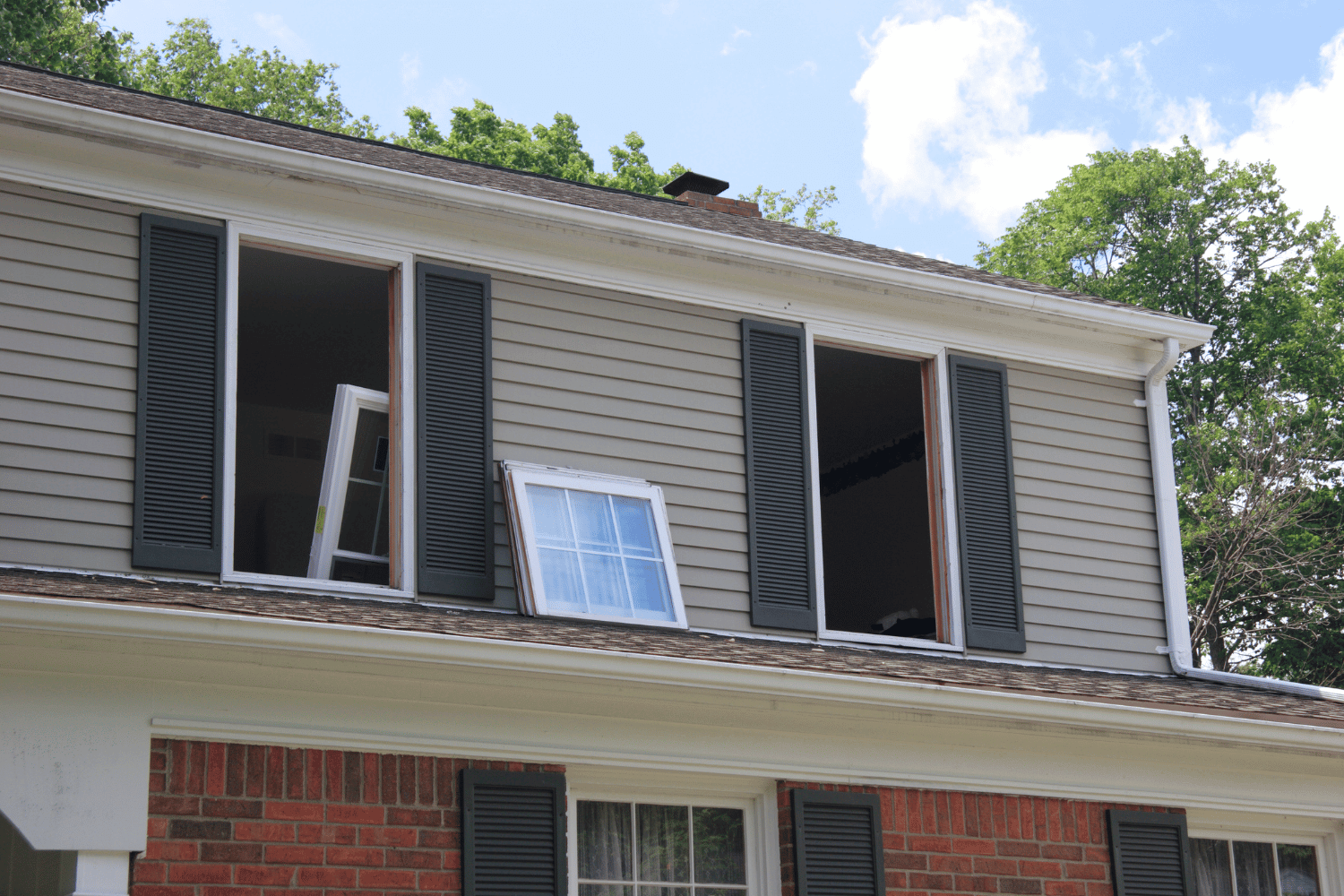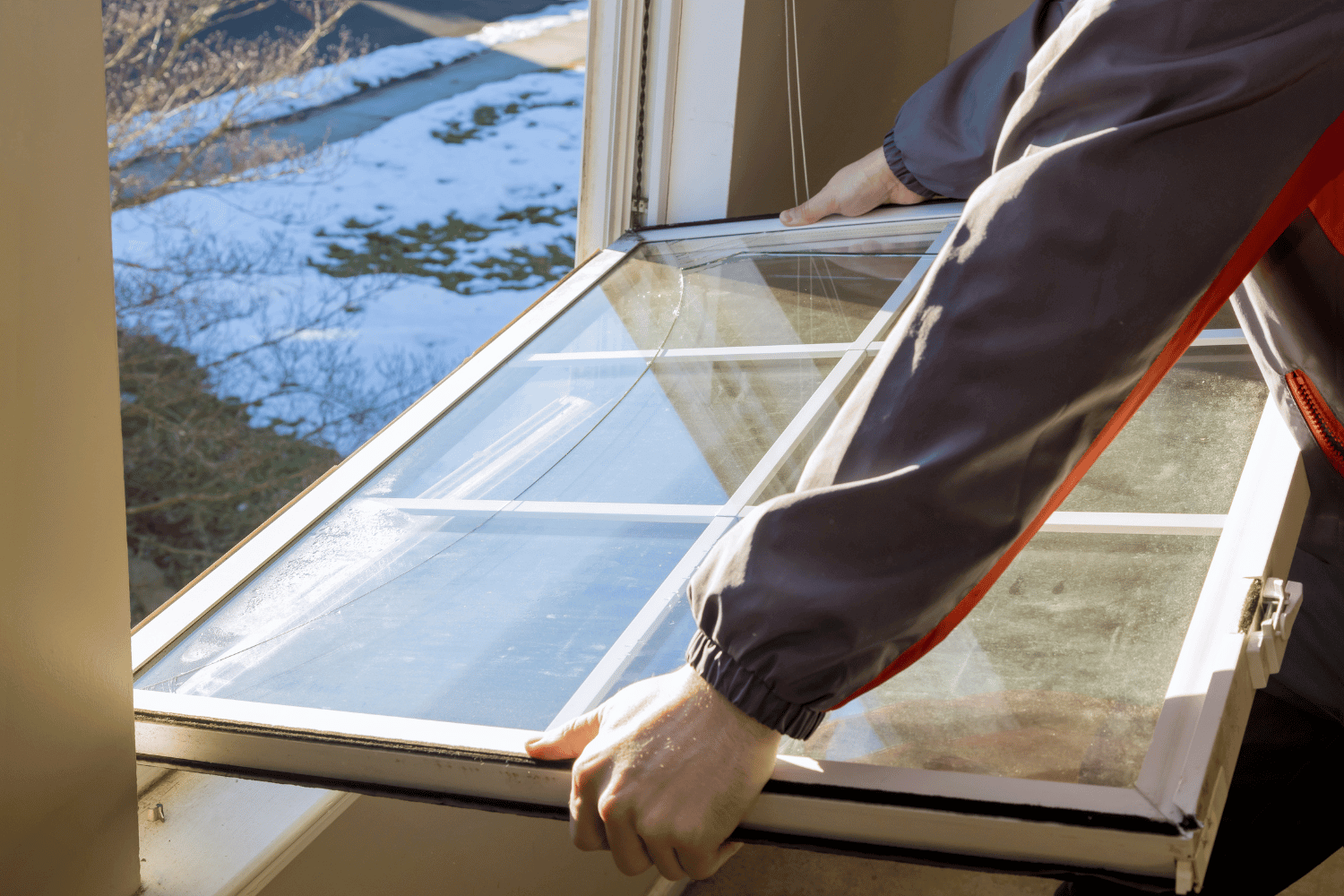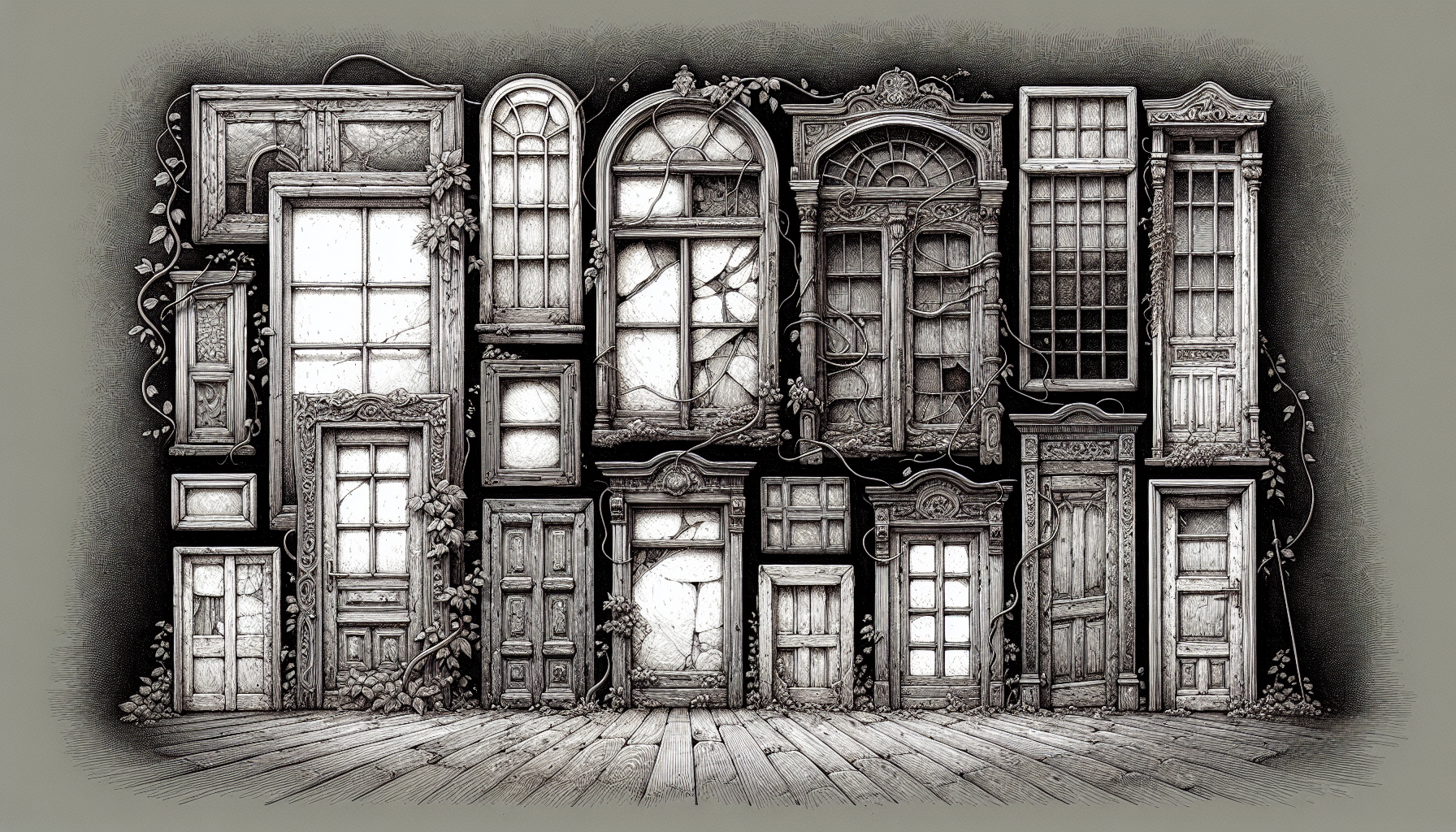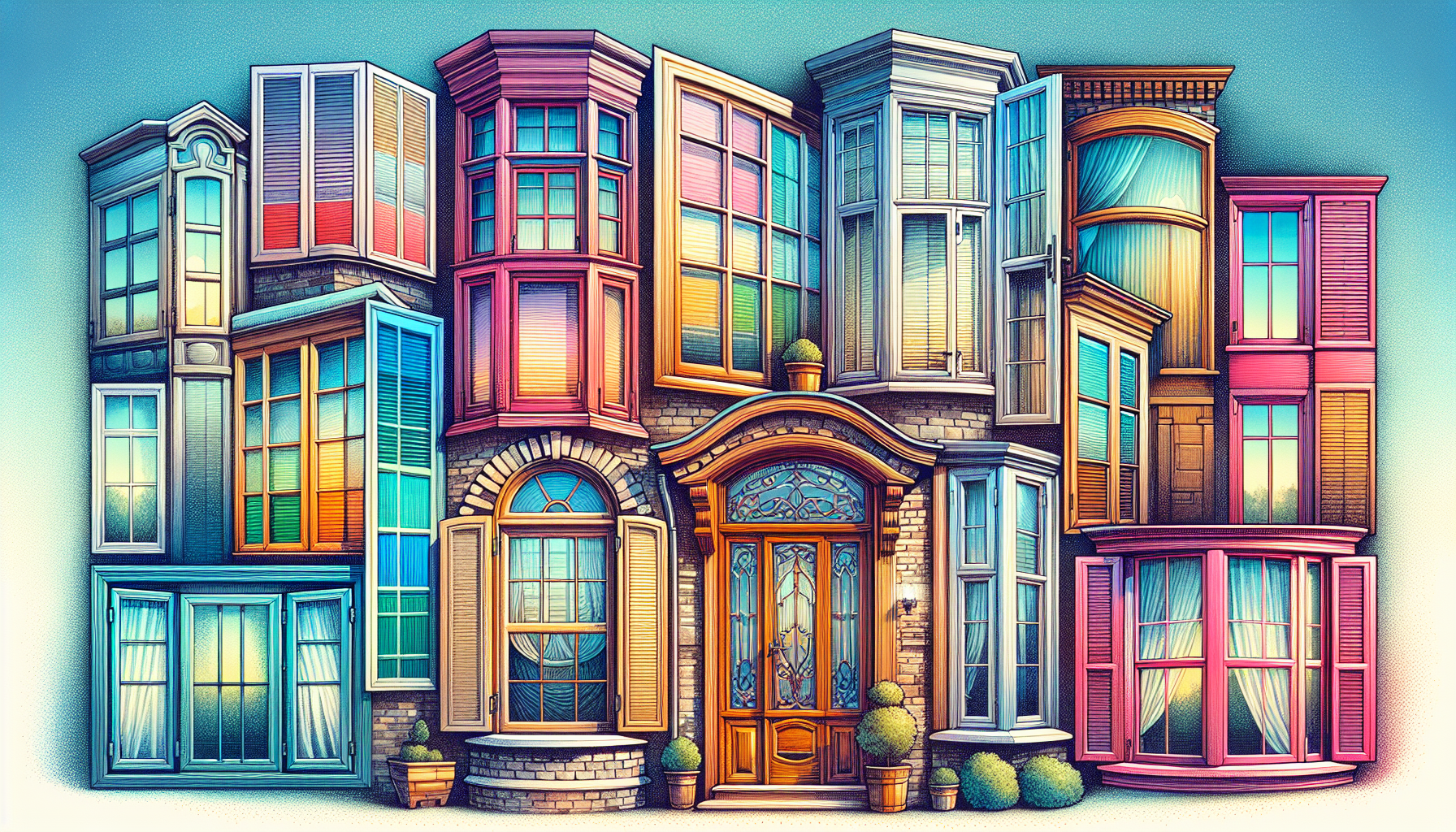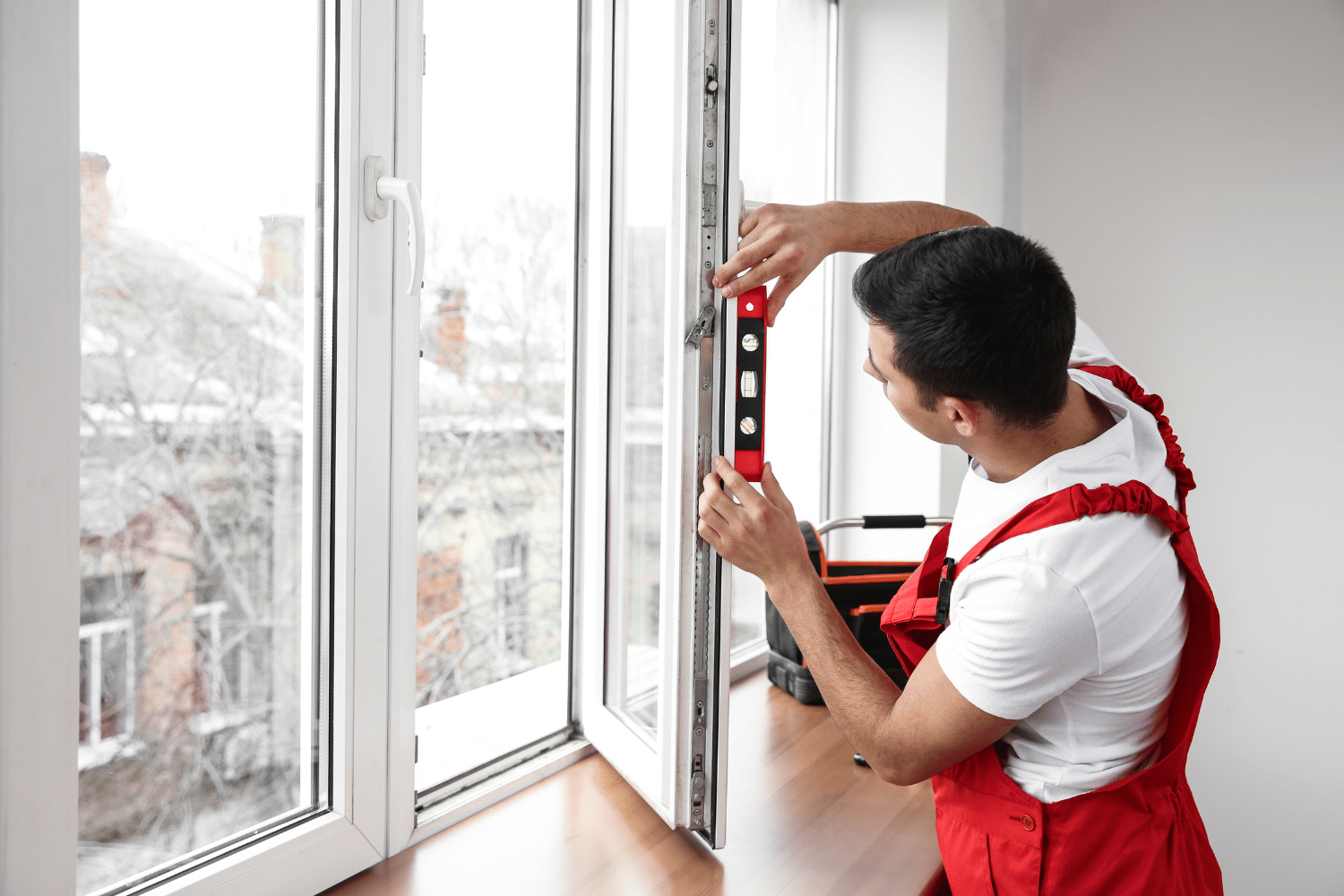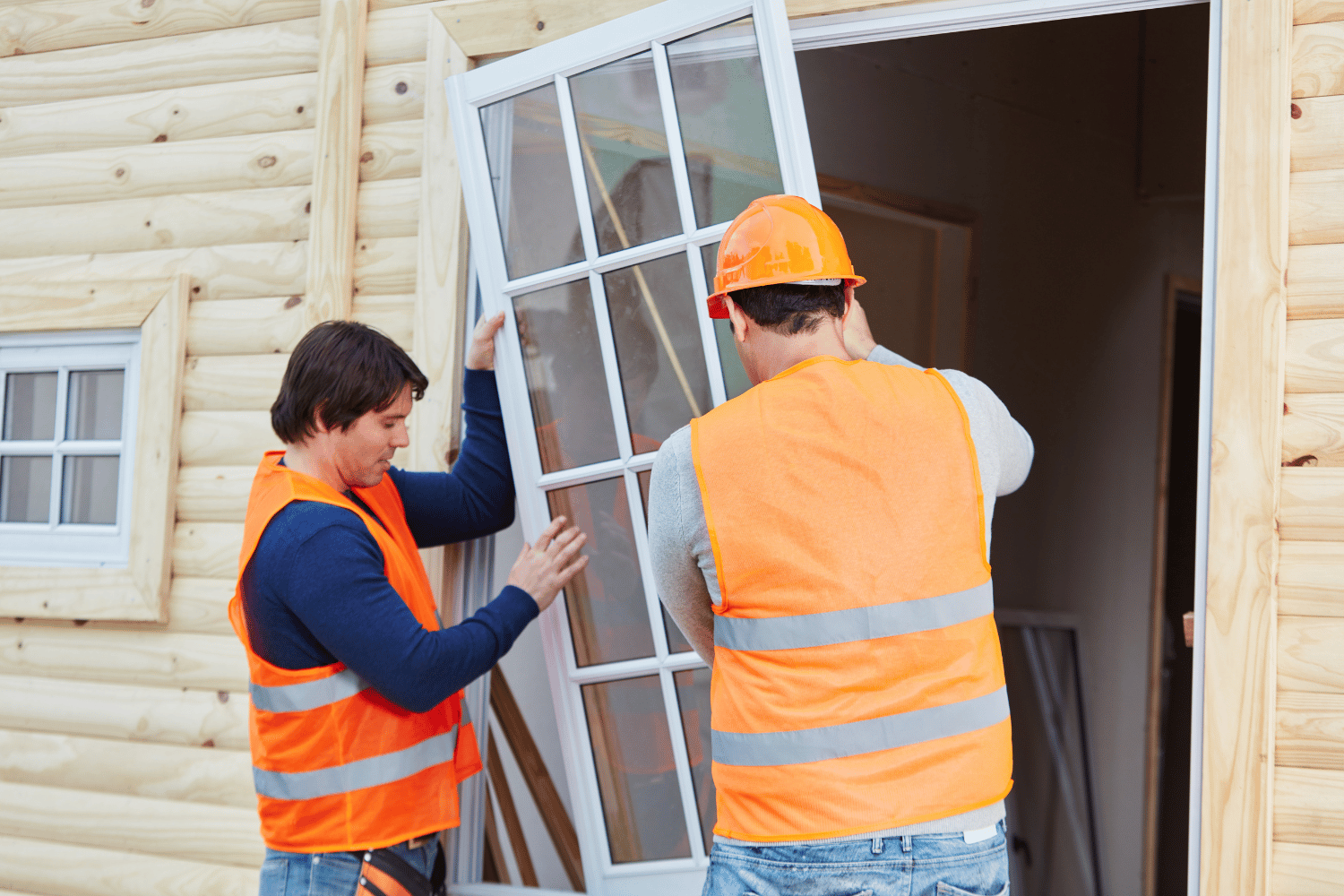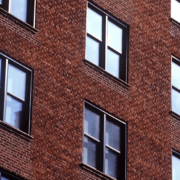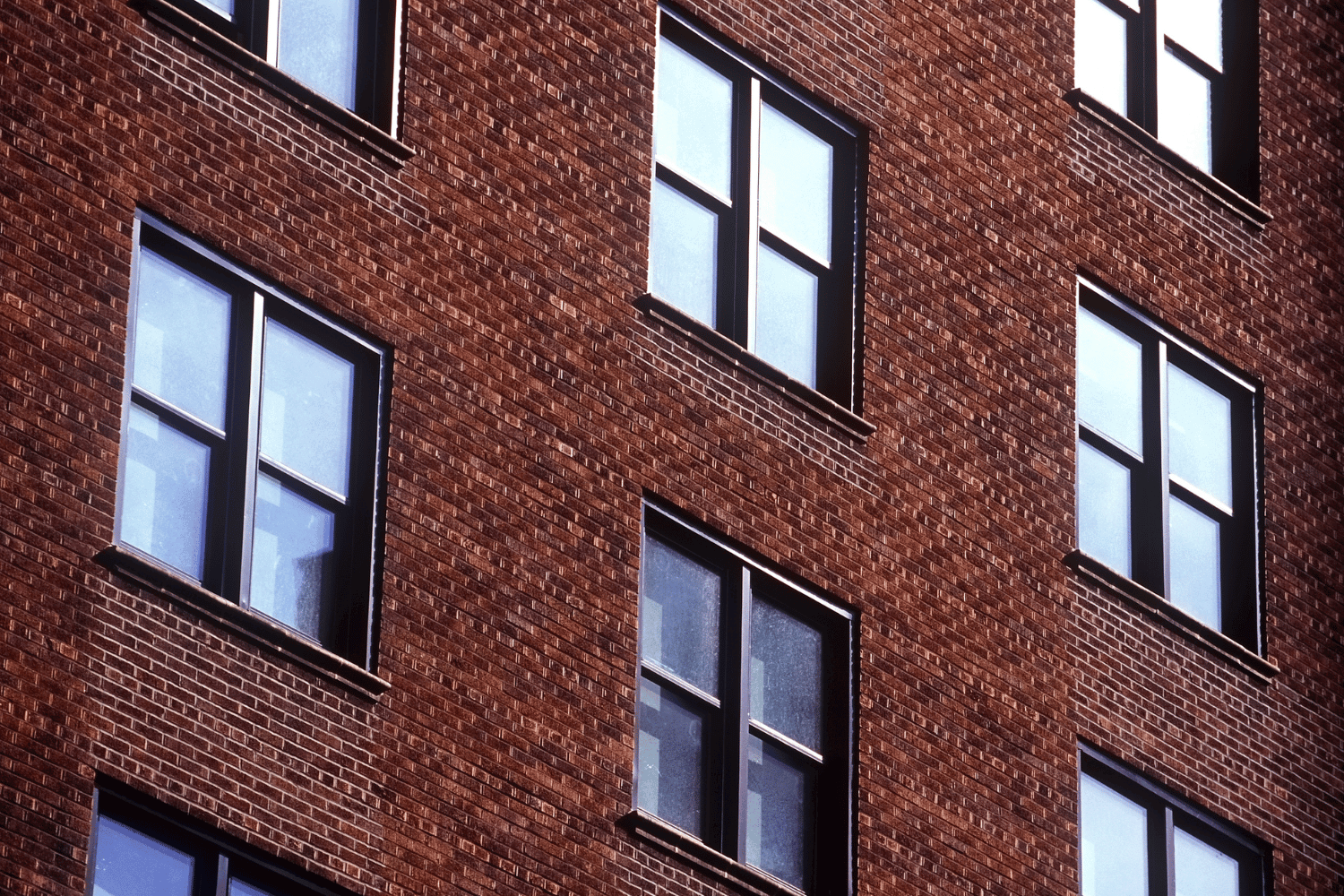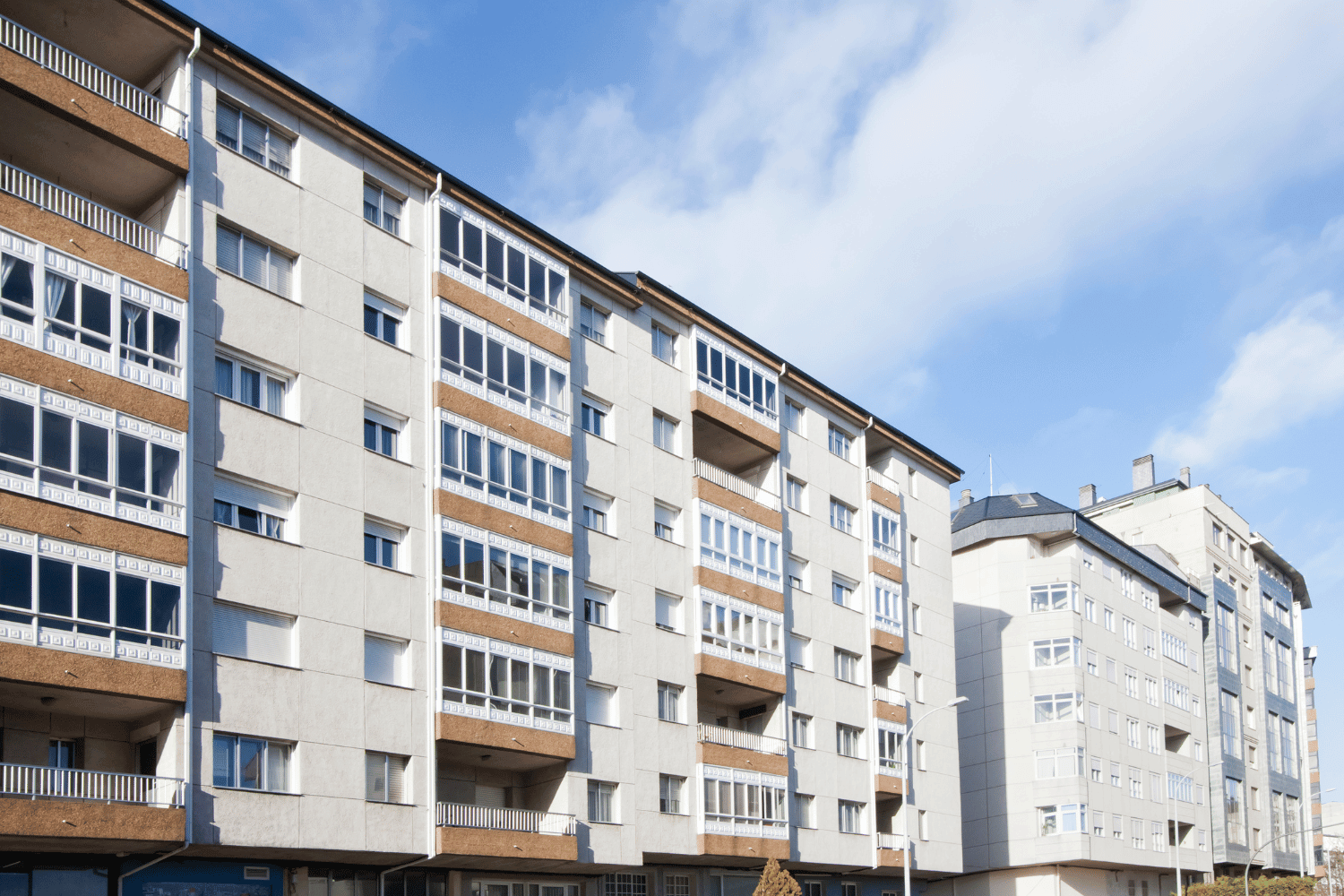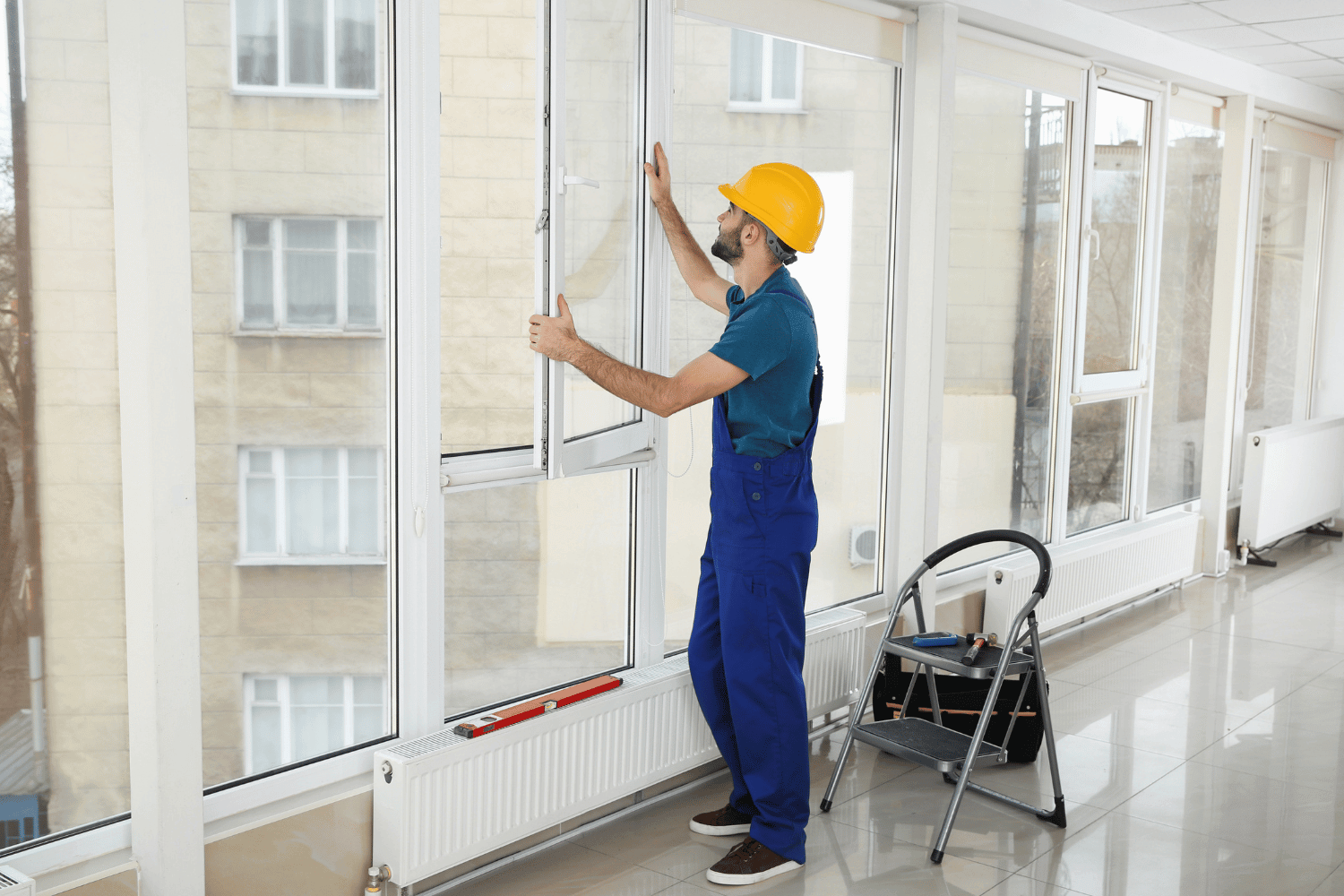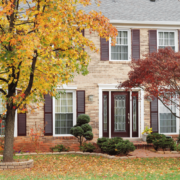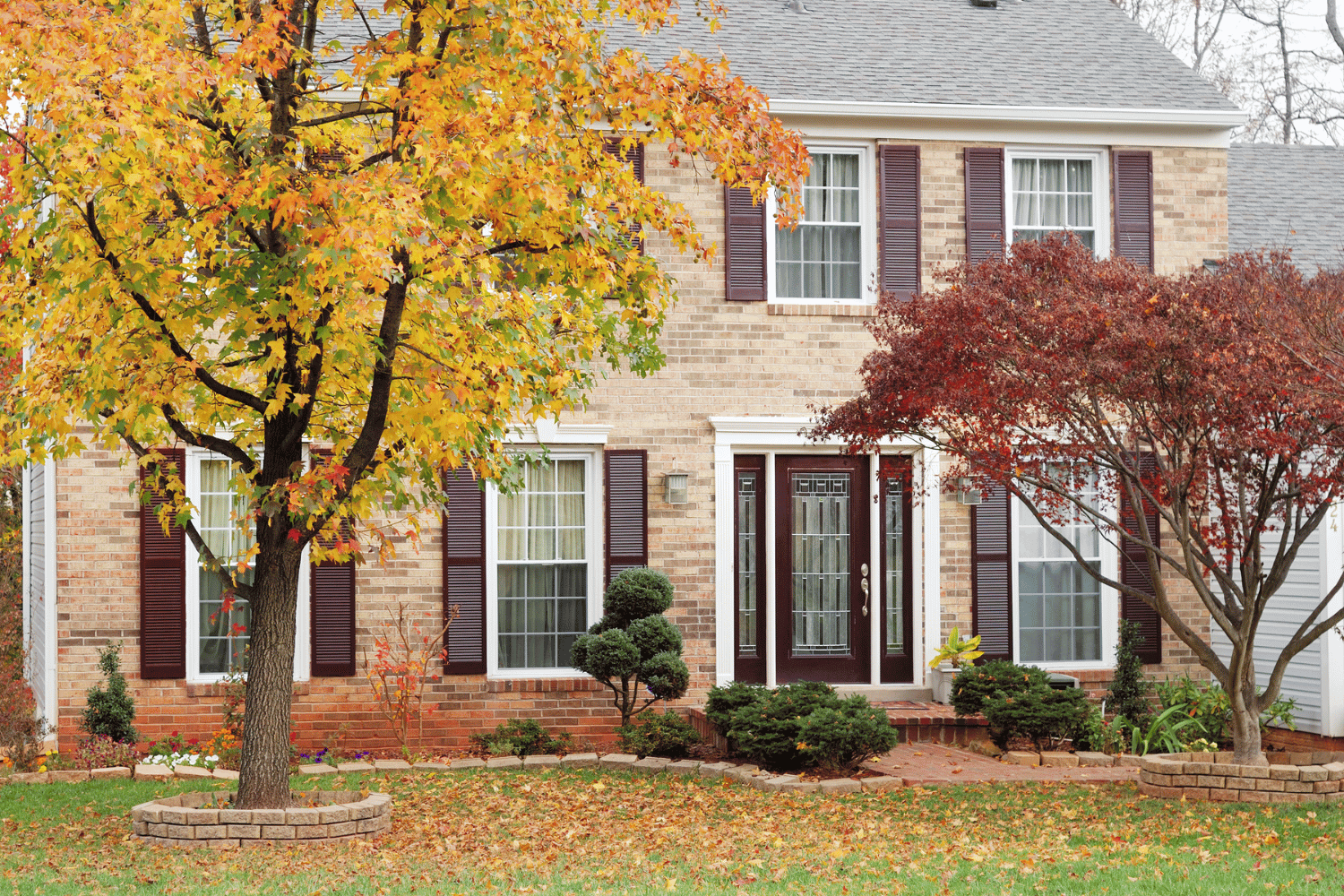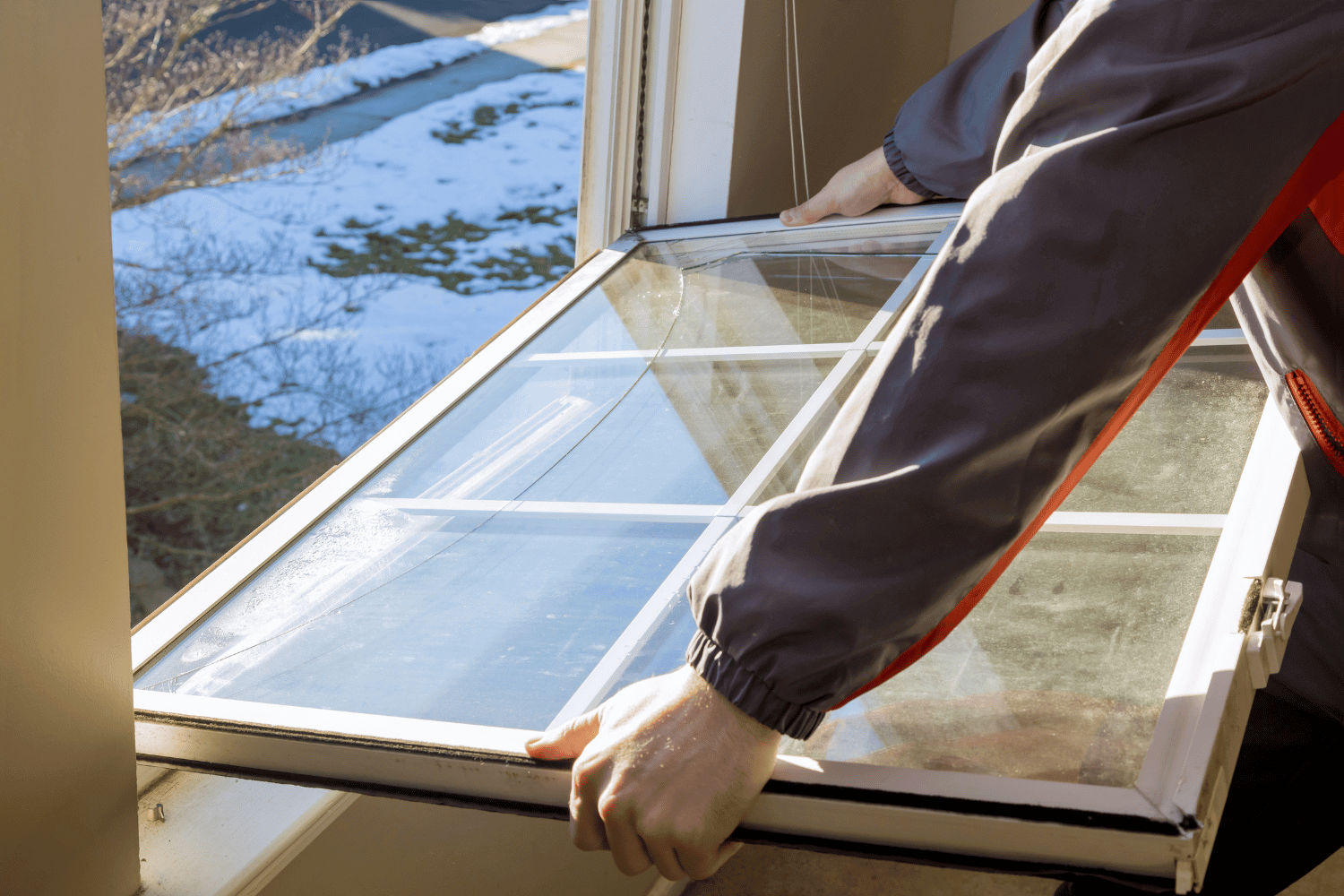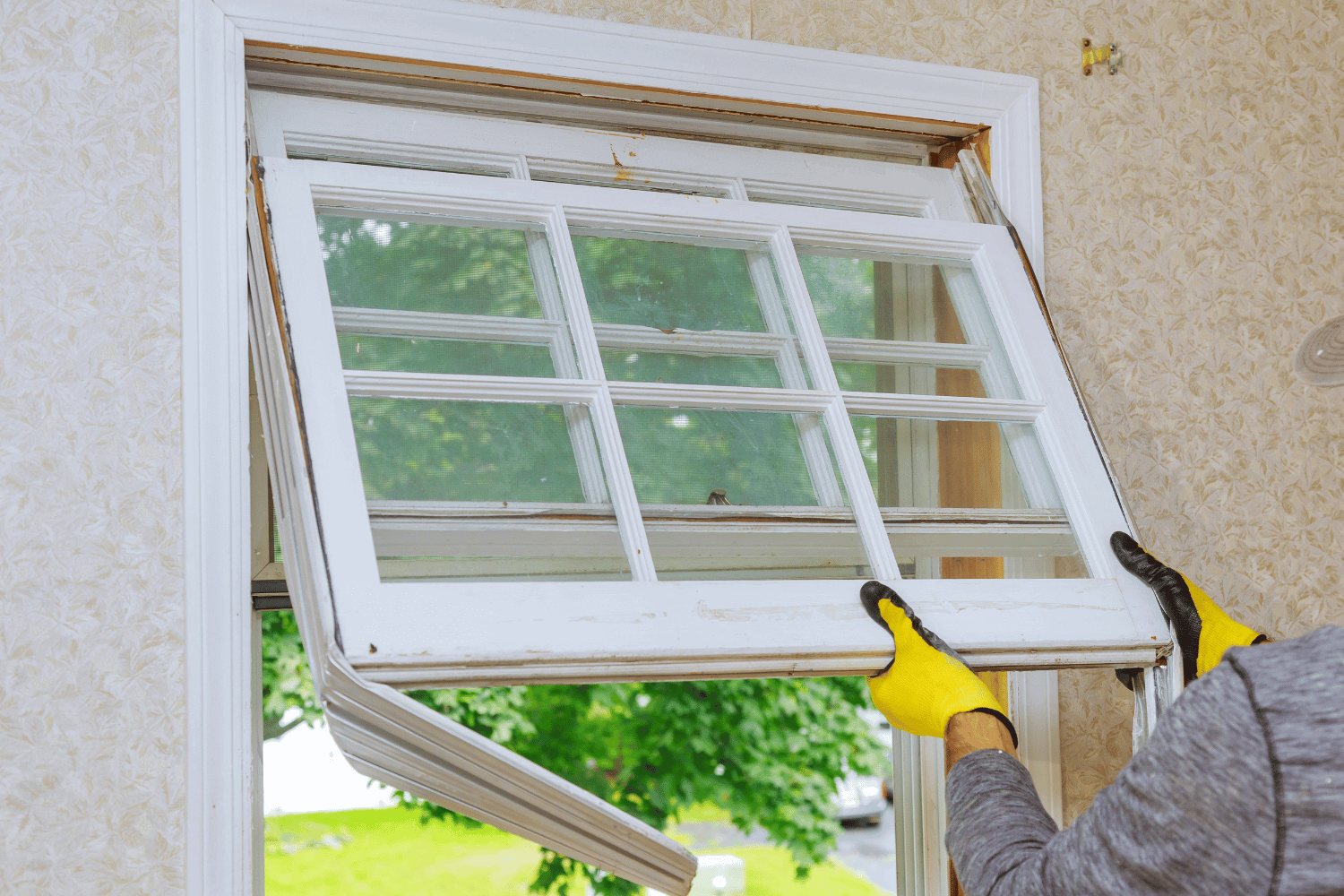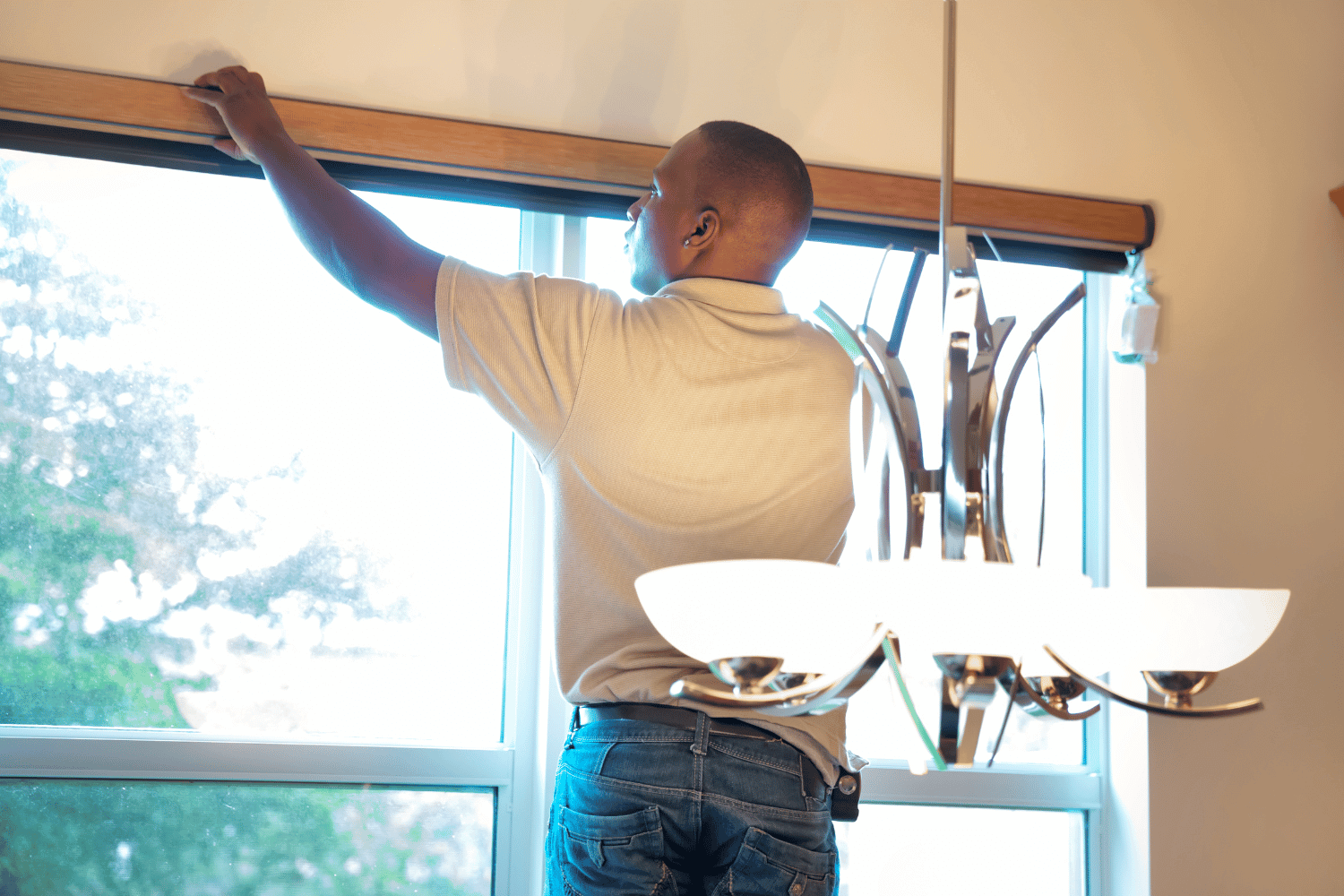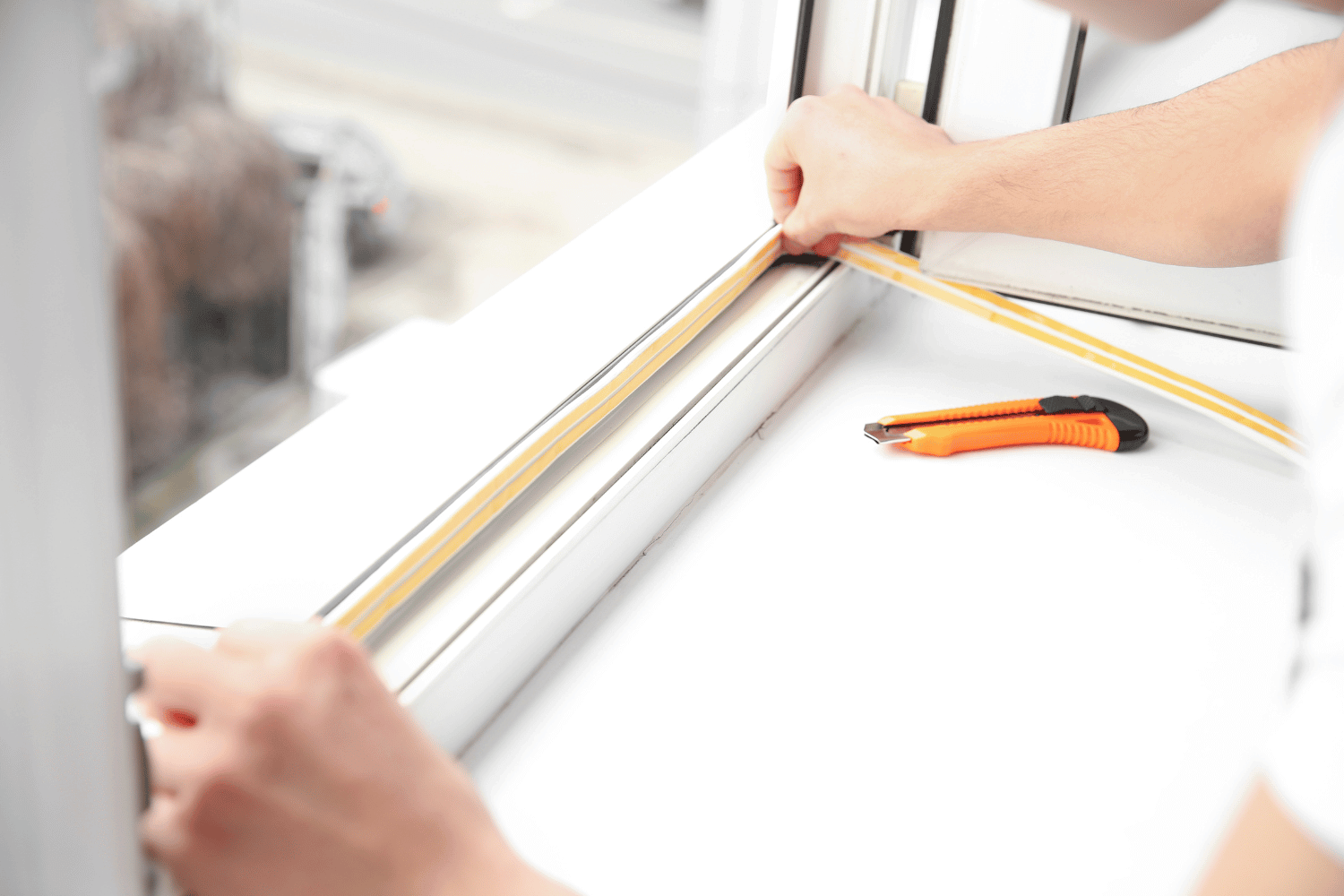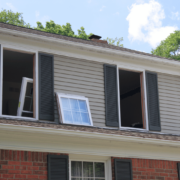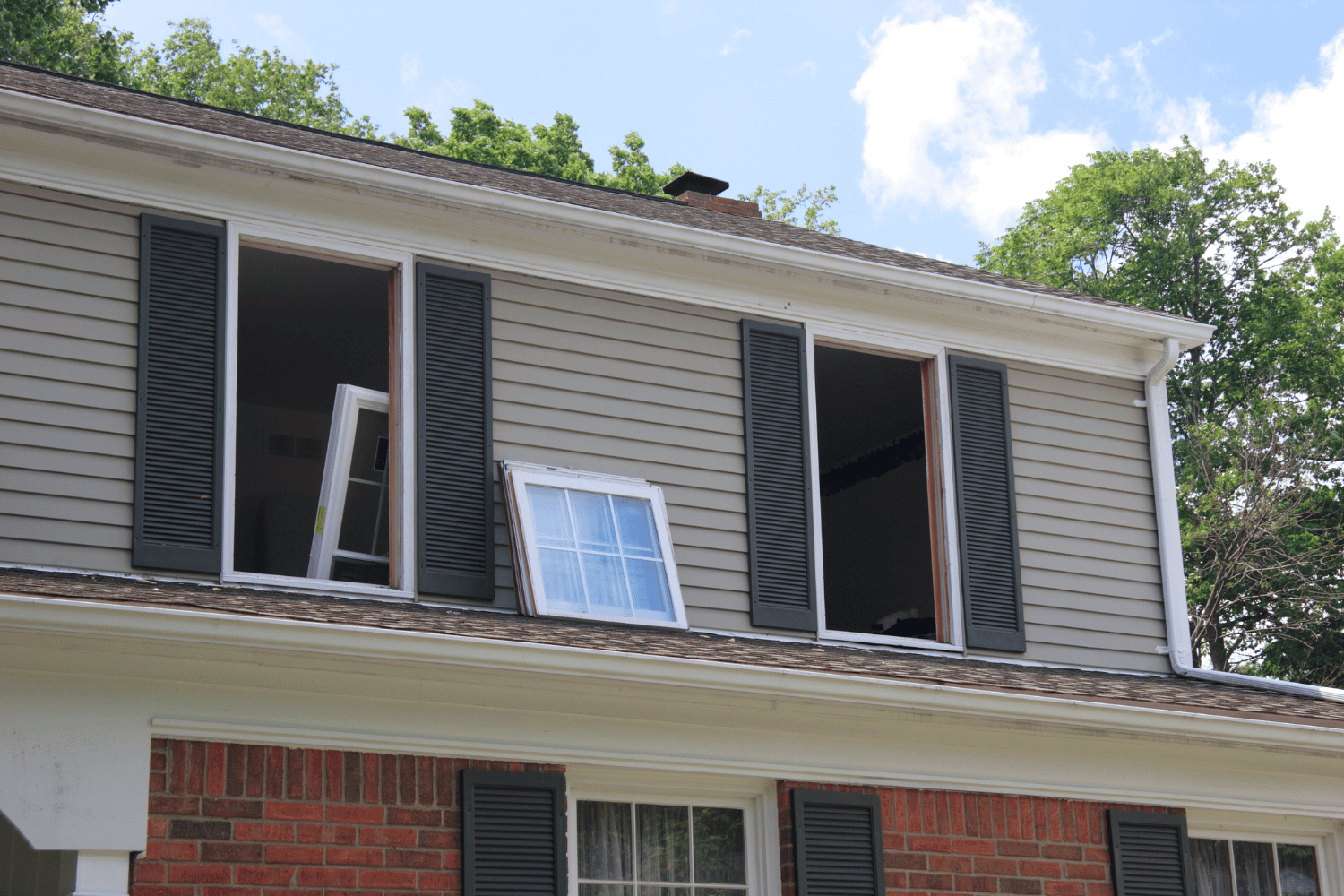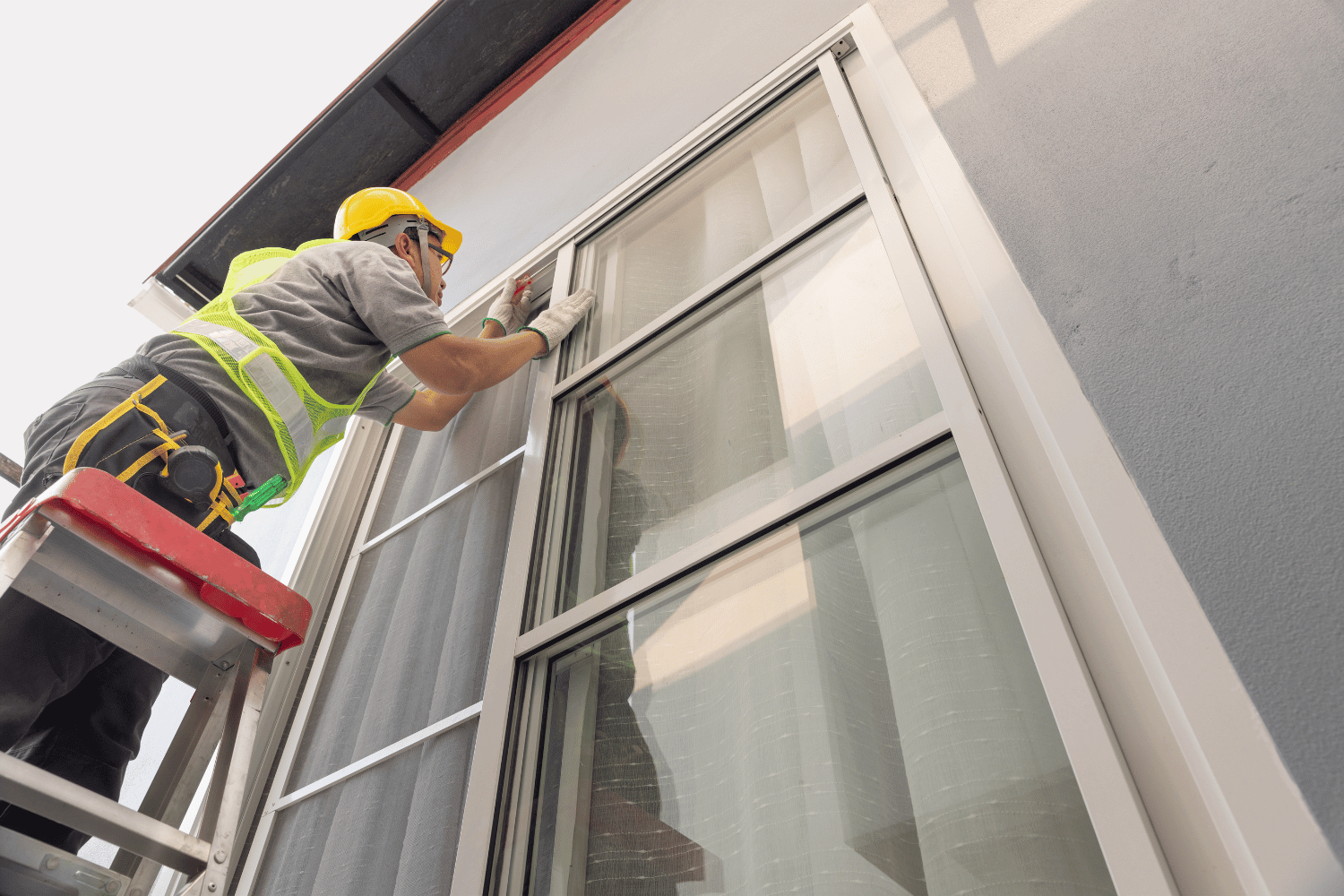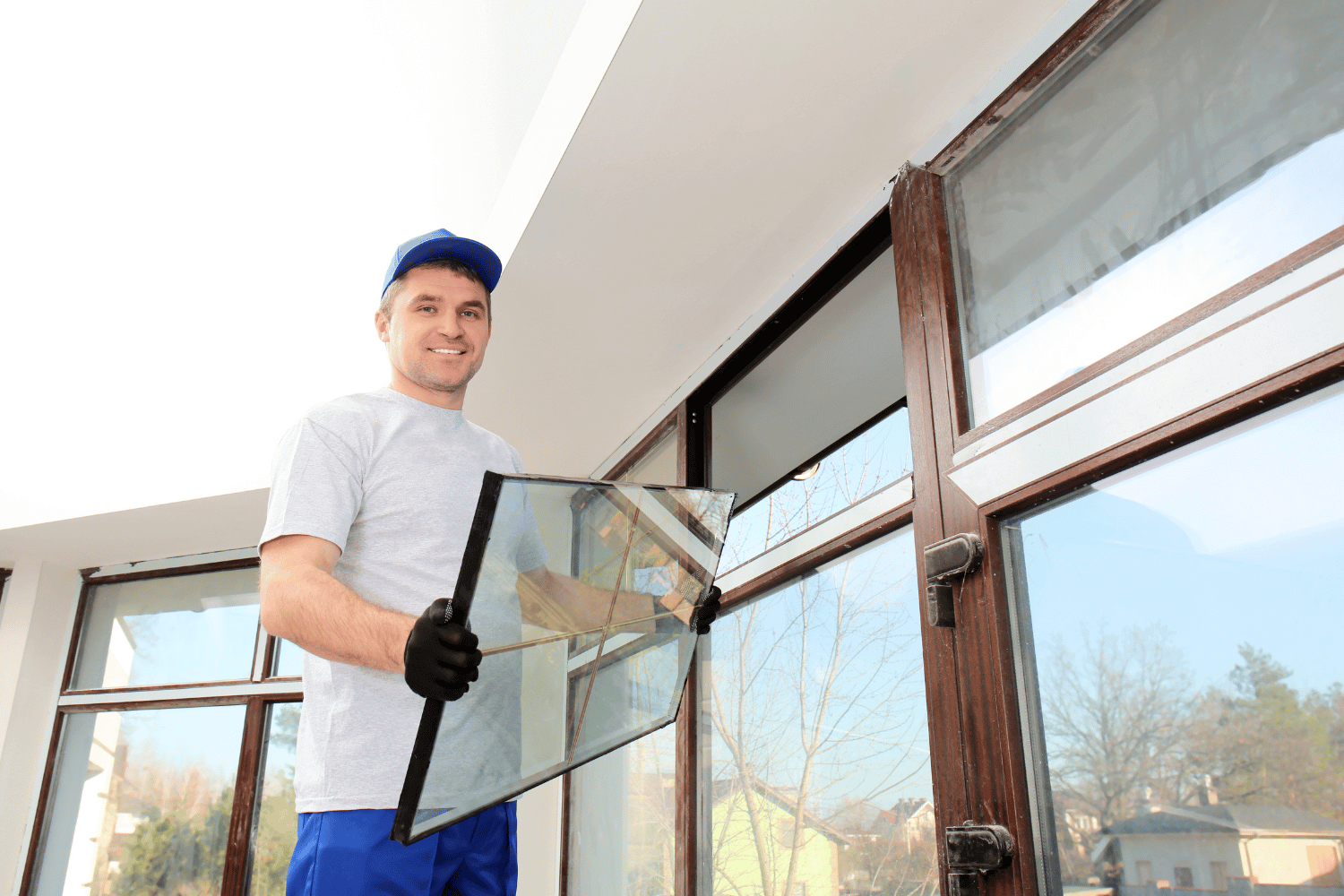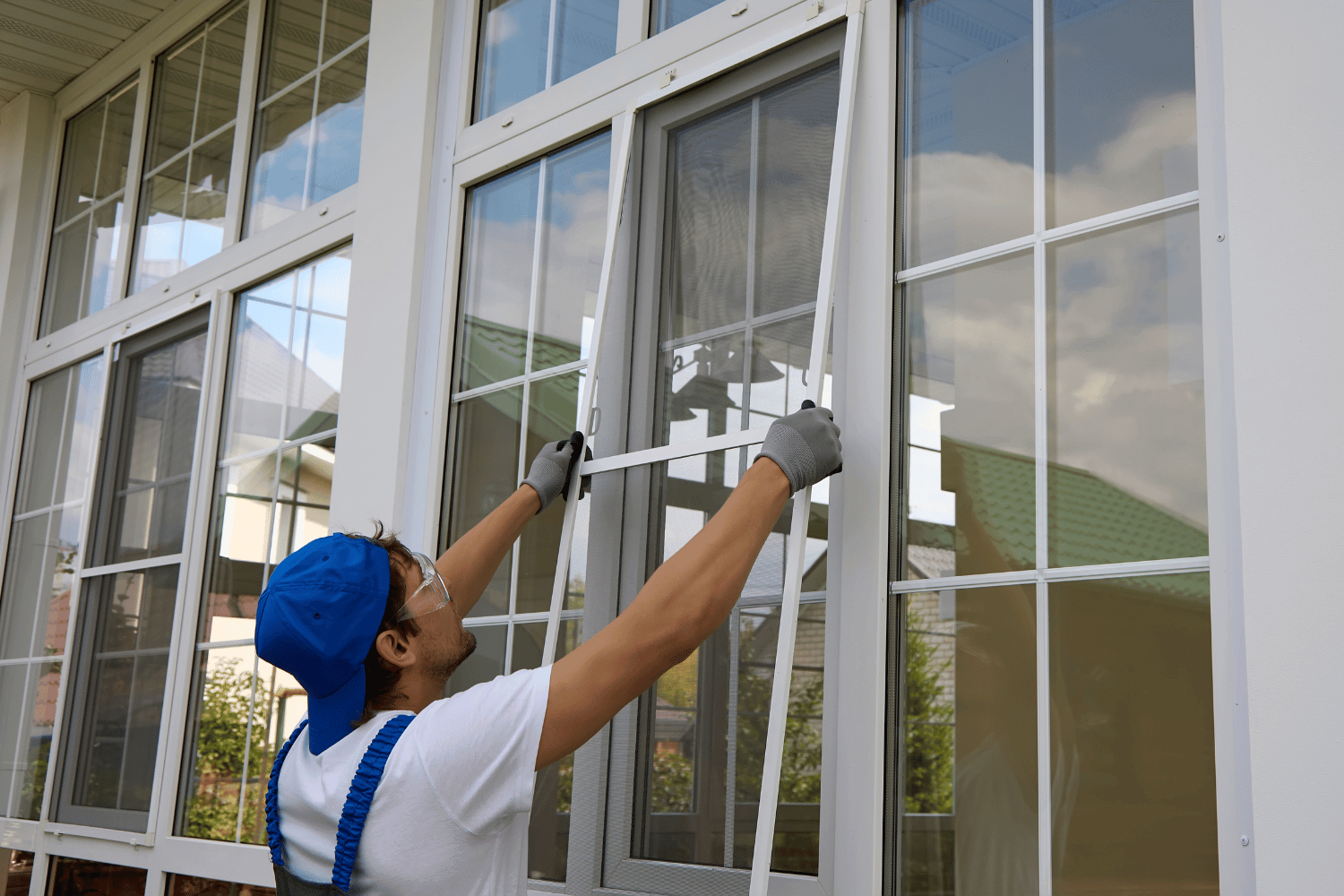Casement windows, which are side-hinged windows that open outward using a crank mechanism, are popular for their ability to provide excellent ventilation and clear views. In this article, we will explore what are casement windows, their types, benefits, materials, and costs to help you decide if they are right for your home.
Key Takeaways
-
Casement windows are side-hinged and feature a crank mechanism, allowing for excellent ventilation, unobstructed views, and increased natural light.
-
There are various types of casement windows, including single, double (French), and picture windows with flankers, each suited to different needs and preferences.
-
The cost of casement windows varies based on type and materials, with average installation prices around $570, influenced by factors such as window size, material, and installation method.
Understanding Casement Windows

An illustration of various casement windows showcasing their features.
Casement windows are a unique and versatile option for any home, characterized by their side-hinged design that allows them to open outward. This design not only provides excellent ventilation but also offers unobstructed views and increased natural light, making them a favorite among homeowners. The ease of operation, thanks to a simple crank mechanism, adds to their appeal by making them user-friendly and practical.
Let’s explore what makes casement windows special, including their definition, operating mechanism, types, and common sizes to help you find the perfect fit for your home.
Definition and Mechanism
Casement windows are distinct from other types of windows due to their unique side-hinged design, which allows them to swing outward like a door. This design is typically operated by a hand crank, making it easy to open and close the window with minimal effort. The mechanism is straightforward yet highly effective, ensuring a tight seal when the window is closed, which enhances both security and energy efficiency.
The full-height opening of casement windows provides superior ventilation compared to other window types. This design allows homeowners to fully utilize side breezes, effectively catching and circulating fresh air throughout the home. Additionally, the lack of a center bar means there are no obstructions to the view, making these windows a great choice for those who want to maximize their connection to the outdoors.
Types of Casement Windows
Casement windows come in various casement window type, each suited to different needs and preferences. The most common type is the single casement window, which is hinged on one side and can open either to the left or right. This type is ideal for standard window openings and provides excellent ventilation and easy operation.
Double casement windows, also known as French casement windows, feature two sashes set side-by-side, each hinged on the outer side. When opened, there is no center stile, providing an unobstructed view and allowing for a wider opening. This type is perfect for larger window openings and can enhance the aesthetic appeal of your home.
Another popular option is the picture window with casement flankers, which combines a fixed picture window in the center with operable casement windows on either side. This design offers the best of both worlds: a large, unobstructed view in the center and the ability to open the side windows for ventilation.
Egress casement windows are also available, designed to be large enough for a person to fit through, making them suitable for emergency exits.
Common Casement Window Sizes
Casement windows are available in a range of standard sizes to cater to common building and renovation needs. These sizes typically range from 24 to 48 inches in width and 36 to 72 inches in height, providing options for various applications within the home. These standard sizes are widely available and can be easily sourced from most window manufacturers.
For homes with unique architectural requirements, many manufacturers offer custom sizes for custom casement windows. This flexibility ensures that no matter the size or shape of the window opening, there is a casement window that can be tailored to fit perfectly. Custom sizes are particularly useful for older homes or those with non-standard window openings.
Benefits of Casement Windows

A sunny room with open casement windows providing fresh air.
Casement windows offer a multitude of benefits that make them an attractive option for homeowners. One of the primary advantages is the enhanced ventilation they provide. By opening fully, these windows allow maximum airflow, which can significantly improve indoor air quality and create a more comfortable living environment. Additionally, their design ensures that they can catch side breezes, further enhancing ventilation.
Another significant benefit is their energy efficiency. Casement windows are known for their tight seals, which effectively keep out drafts and reduce heat transfer, leading to lower energy bills and increased home comfort. The large glass panes also offer unobstructed views and increased natural light, contributing to a brighter and more inviting home.
Enhanced Ventilation
One of the standout features of casement windows is their ability to provide enhanced ventilation. Unlike other window types, casement windows open to their full height, allowing for maximum airflow and fresh air intake. This design is particularly beneficial in areas of the home that require good ventilation, such as kitchens and bathrooms.
The ease of opening the window with a crank mechanism ensures that anyone can enjoy improved airflow with minimal effort.
Energy Efficiency
Casement windows excel in energy efficiency, largely due to their design and the materials used in their construction. When closed, these windows seal tightly against the frame, effectively blocking drafts and reducing heat transfer. This tight seal not only enhances insulation but also improves the overall energy efficiency of the home, making casement windows a smart choice for those looking to reduce their energy bills.
The materials used in casement windows also play a crucial role in their energy efficiency. For instance, wood frames are known for their natural insulating properties, while fiberglass frames offer excellent thermal performance due to their low U-value. These features ensure that casement windows provide superior insulation, keeping your home comfortable year-round.
Unobstructed Views
Casement windows are designed to offer stunning, unobstructed views of the outdoors. Thanks to their large glass panes and the absence of center bars, these windows provide maximum visibility, allowing you to enjoy the beauty of your surroundings without any hindrances. This feature makes casement windows an excellent choice for living rooms, bedrooms, and any area where you want to maximize natural light and views.
Moreover, the increased natural light that casement windows allow into the home can create a brighter and more inviting atmosphere. The unobstructed view not only enhances the aesthetic appeal of your home but also contributes to a greater sense of connection with the outdoors. This feature is particularly beneficial in areas with picturesque landscapes or stunning cityscapes.
Casement Window Materials
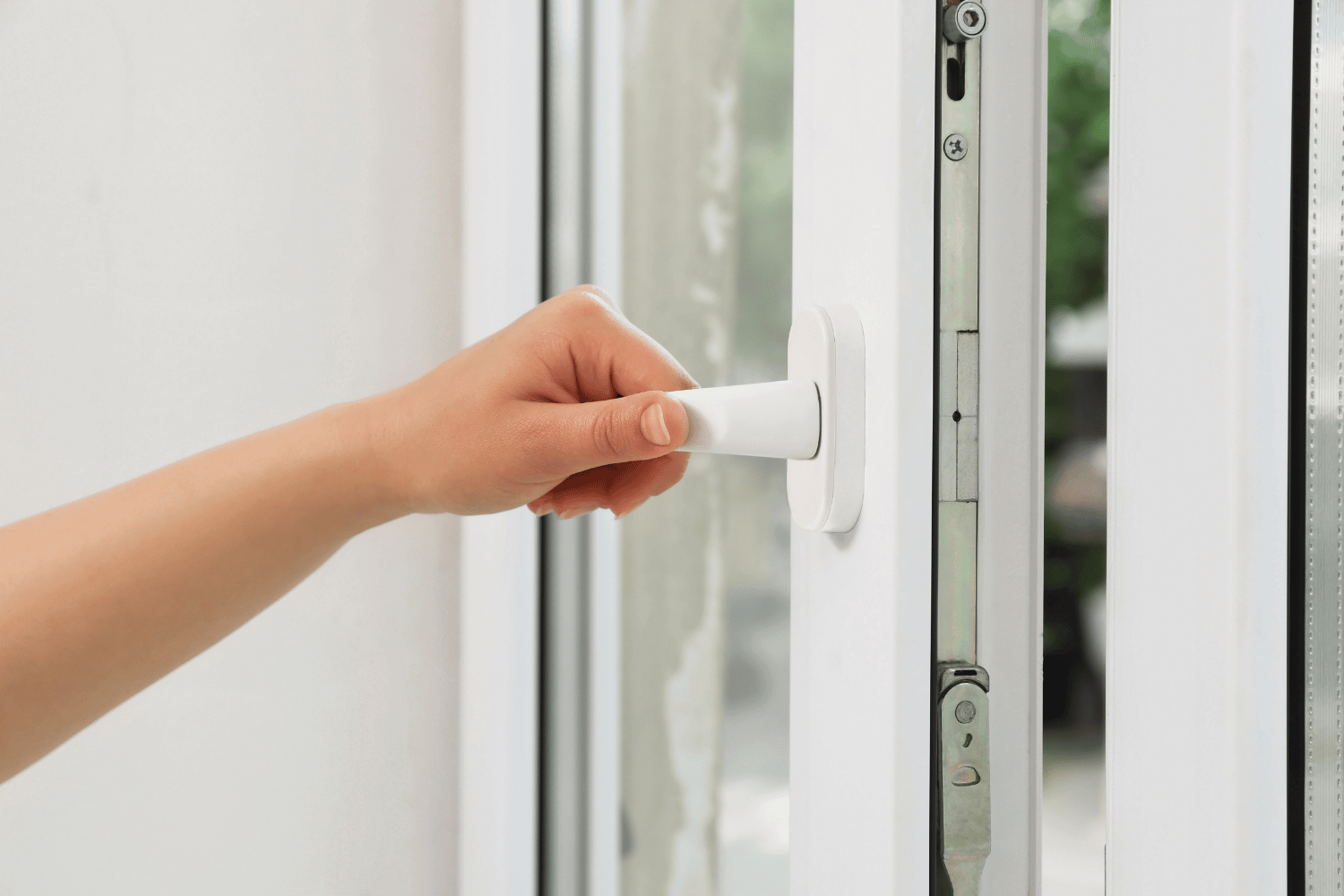
Different materials used for casement windows including wood and vinyl.
The choice of materials for casement window frames is a critical factor that affects their performance, durability, and cost. Common materials include vinyl, wood, aluminum, and fiberglass, each offering distinct advantages and drawbacks. The material you choose will influence the window’s insulation properties, resistance to weather conditions, and overall aesthetic appeal.
We’ll examine the materials used for casement windows, highlighting their benefits and drawbacks, to help you choose the best option for your home.
Vinyl Casement Windows
Vinyl casement windows are a popular choice due to their affordability and decent insulation properties. These windows are known for their durability, as they resist fading and warping even in harsh weather conditions. Additionally, vinyl frames require minimal maintenance compared to wood or aluminum, making them a practical option for busy homeowners.
Another advantage of vinyl casement windows is their ability to reduce exterior noise, thanks to the tight seal around their edges. This feature can create a quieter and more peaceful indoor environment. However, while vinyl is generally durable, it may not offer the same level of aesthetic appeal as wood or the advanced performance of fiberglass.
Wood Casement Windows
Wood casement windows offer a classic and timeless aesthetic that can enhance the overall appearance of any home. These windows can be customized in various sizes and finishes, allowing homeowners to achieve a look that complements their interior and exterior design. The natural insulating properties of wood also contribute to the energy efficiency of these windows, making them a great choice for eco-conscious homeowners.
However, wood frames require proper maintenance to prevent rot and damage from the elements. Regular painting or staining is necessary to protect the wood and maintain its appearance. Despite the maintenance needs, many homeowners find the beauty and warmth of wood casement windows worth the extra effort.
Aluminum and Fiberglass Casement Windows
Aluminum and fiberglass are two materials that offer distinct benefits for casement window frames. Aluminum frames are lightweight and durable but are susceptible to corrosion and poor insulation. These windows are often chosen for their sleek, modern look and are suitable for areas where strength and durability are essential.
On the other hand, fiberglass casement windows are known for their excellent durability and resistance to water and heat. They offer superior insulation properties, making them a more energy-efficient option compared to aluminum. Fiberglass frames are available in a variety of colors and styles, including options that mimic the appearance of wood, providing both performance and aesthetic versatility.
Costs Associated with Casement Windows

A chart displaying the cost breakdown of casement windows.
Understanding the costs associated with casement windows is crucial for making an informed decision. The overall cost can vary significantly based on factors such as the type of window, materials used, size, and installation method. On average, the cost to install casement windows is around $570, but this can range from $200 to over $2,000 depending on various factors.
We’ll break down the price ranges for different casement windows, discuss professional installation costs, and explore other factors that can affect the overall expense, helping you budget effectively and choose the best options.
Price Ranges by Type
The casement window cost can vary widely depending on the type and materials used. Single casement windows typically range from $221 to $401, making them an affordable option for many homeowners. Double or French casement windows are more expensive, with casement window prices ranging from $415 to $755 due to their larger size and complexity.
Triple-pane casement windows, known for their superior insulation, can cost between $400 and $950. Vinyl casement windows are generally available for around $200 to $780, offering a budget-friendly option with decent performance.
Aluminum casement windows, while durable, can range from $200 to $1,180, reflecting their higher manufacturing costs. Wood casement windows are among the most expensive, with prices ranging from $300 to $2,000 depending on the size and customization options.
The price of casement windows can also increase due to the complexity of installation, special features like energy-efficient coatings, and the reputation of the window brand.
Installation Costs
Professional installation of casement windows involves several costs beyond the price of the windows themselves. Labor costs typically range from $100 to $300 per window, depending on the complexity and location of the installation. These costs cover the time and effort required for a precise and secure installation, as well as the removal and disposal of old windows. It’s important to obtain a written estimate that includes a quote, contract, and warranty to understand the full scope of labor costs.
Geographic location can also influence labor costs, with prices varying significantly between regions. For those considering a DIY approach, the costs for materials can range from $200 to $2,000, depending on the type and number of windows. While DIY installation can save on labor costs, it requires accurate measurements, the right tools, and some level of expertise to avoid costly mistakes.
Homeowners should ensure that the installer is licensed, bonded, insured, and has a good reputation. Many professional services offer warranties on both labor and materials, providing added security and peace of mind. Choosing the lowest-cost estimate may sometimes result in compromised quality, so it’s crucial to balance cost with the reputation and reliability of the installer.
Factors Affecting Cost
The overall cost of casement windows can be influenced by several factors. These factors can vary widely depending on specific circumstances. The size of the window is a significant factor, with larger windows typically costing more due to the additional materials and complexity involved in their production and installation. Custom sizes also tend to be more expensive than standard sizes because they are tailored to fit specific architectural needs.
The material of the window frame can significantly influence costs. Wood and composite frames are generally more expensive than vinyl or aluminum due to their superior insulation properties and aesthetic appeal. Additionally, reputable brands such as Andersen or Pella may charge higher prices compared to lesser-known brands, reflecting their quality and reliability. The choice of window frame material plays a crucial role in these considerations.
Special features like additional glass panes, coatings, and gas insulators can also increase the overall cost.
Professional vs. DIY Casement Window Installation
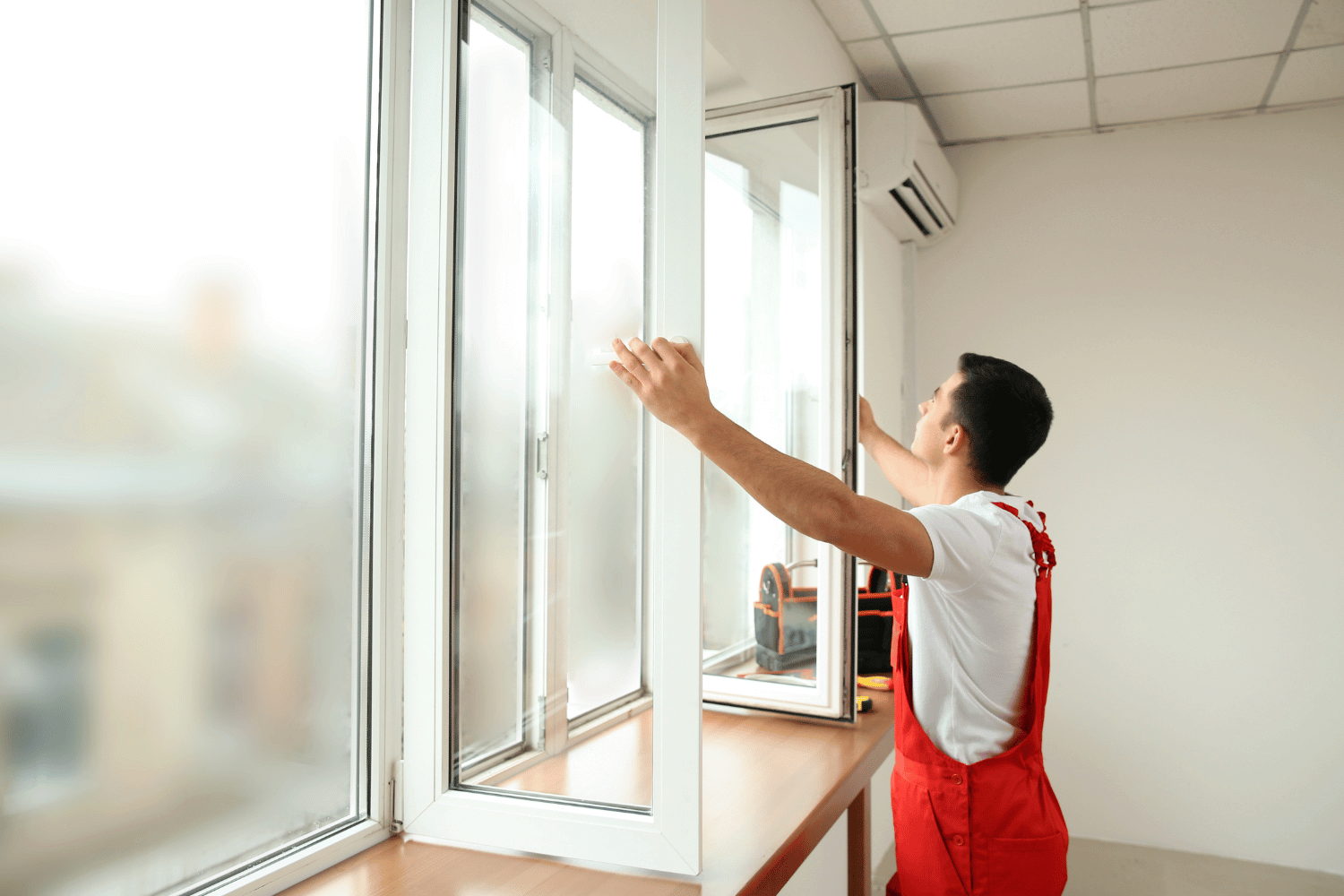
A professional installing casement windows in a home.
When it comes to installing casement windows, homeowners have the option to choose between professional casement window installation and DIY. Each approach has its pros and cons, depending on factors such as skills, budget, timeline, and the complexity of the project. Professional installation ensures high-quality workmanship, compliance with local building codes, and often includes warranties for added peace of mind.
DIY installation, on the other hand, can be rewarding and cost-effective for those with the necessary skills and tools. However, it requires careful planning, accurate measurements, and a good understanding of the installation process to avoid mistakes that could affect the window’s performance.
We’ll detail both professional and DIY installation to help you decide the best option for your home.
Professional Installation
Hiring a professional window installer offers multiple benefits. There are several advantages to using their services. Professionals are trained to handle the installation safely, ensuring that the windows are fitted correctly and securely. They can identify potential problems before they escalate into costly repairs and ensure that the installation meets local building codes. This level of expertise can save homeowners time and prevent issues such as water leaks or poor insulation.
Additionally, professional installers can complete the job quickly and efficiently, often in less time than a DIY project would take. Many professionals offer warranties on both labor and materials, providing added security and peace of mind for homeowners.
Selecting a reputable installer ensures a high-quality installation, enhancing the performance and longevity of your casement windows.
DIY Installation
For those who enjoy tackling home improvement projects, DIY casement window installation can be a rewarding experience. It allows homeowners to save on labor costs and gain a sense of accomplishment. However, DIY installation requires accurate measurements, the right tools, and a good understanding of the installation process to avoid costly mistakes. Safety gear is also essential to protect against potential injuries during the installation.
Vinyl windows are considered one of the easiest types to install for DIY projects, making them a popular choice for those new to window installation. While DIY can be less expensive, it’s important to weigh the potential risks and challenges against the cost savings. For complex projects or those involving multiple windows, hiring a professional may be the better option to ensure a successful outcome.
Are Casement Windows Right for Your Home?
Deciding whether casement windows are right for your home involves considering various factors, including your specific needs, budget, and the characteristics of your home. Casement windows offer numerous benefits, such as enhanced ventilation, energy efficiency, and unobstructed views, making them a valuable addition to many homes.
However, it’s important to also consider potential drawbacks, such as maintenance needs and security concerns, to make an informed decision. We’ll explore the pros and cons of casement windows and discuss their ideal applications to help you determine if they’re a good fit for your home and lifestyle.
Pros and Cons
Casement windows offer various advantages, including customization options that allow homeowners to choose from different styles, shapes, and designs to suit their preferences. They also provide excellent ventilation, energy efficiency, and unobstructed views, enhancing the comfort and aesthetics of your home.
Before:
However, there are some disadvantages to consider. For example, vinyl casement windows may warp or crack in extreme temperatures, which can affect their durability. One of the main drawbacks of casement windows is their cost, which can be higher than other window types due to their design and materials. Maintenance needs can also be a concern, especially for wood frames that require regular upkeep to prevent rot and damage.
After:
There are some disadvantages to consider regarding vinyl casement windows:
-
They may warp or crack in extreme temperatures, affecting their durability.
-
Their cost can be higher than other window types due to their design and materials.
-
Maintenance needs can be a concern, especially for wood frames that require regular upkeep to prevent rot and damage.
Additionally, poor installation can lead to issues such as moisture leaks and mold, which can compromise the window’s performance and your home’s structural integrity. Security is another consideration, as casement windows are generally less secure than other window types. The glass can be easily smashed, and the hinges can rust over time, potentially compromising the window’s strength.
Despite these drawbacks, many homeowners find the benefits of casement windows worth the investment, particularly when professionally installed to ensure quality and performance.
Ideal Applications
Casement windows are particularly beneficial in areas where ventilation and ease of cleaning are essential, such as kitchens and bathrooms. Their full-height opening and easy operation make them ideal for these spaces, allowing for maximum airflow and fresh air intake.
Additionally, casement windows can be used as egress windows in bedrooms or basements, providing a safe exit in emergencies. Their versatility and functional benefits make them a valuable addition to various areas of the home.
Summary
In conclusion, casement windows offer a host of benefits that make them an excellent choice for many homeowners. Their unique design provides enhanced ventilation, superior energy efficiency, and unobstructed views, making them a practical and aesthetically pleasing addition to any home. The choice of materials, from vinyl to wood to fiberglass, allows for customization to suit different preferences and budgets.
While the initial cost and potential maintenance needs may be higher than other window types, many homeowners find casement windows worth the investment. Whether you choose professional installation for peace of mind or opt for a DIY approach to save on costs, the key is to ensure proper installation to maximize the performance and longevity of your casement windows. By carefully considering the pros and cons, you can make an informed decision that enhances your home’s comfort, efficiency, and beauty.
Frequently Asked Questions
How long does it take to install new windows?
Installing new windows typically takes about 30 minutes to an hour per window, with an entire house installation often completed within one to two days.
How should I prepare my home for window installation?
To ensure a smooth window installation process, it is essential to clear the area around the windows, remove any window treatments, and create an unobstructed path for the installers. Additionally, protecting your furniture and flooring with coverings will help safeguard them from dust and debris.
Can I install new windows myself?
It is advisable to hire a professional for window installation due to the complexity and required skills, ensuring proper installation and avoiding potential issues.
What factors should I consider when choosing new windows?
When selecting new windows, prioritize energy efficiency, materials, style, and durability, particularly features like double or triple-pane glass and low-E coatings. These factors will significantly impact your home’s comfort and efficiency.
How do new windows improve energy efficiency?
New windows enhance energy efficiency by offering superior insulation, reducing drafts, and minimizing heat transfer, which ultimately results in decreased energy bills.


